

















TLW's Auto Racing Historyscope |
By T.L. Winslow (TLW), the Historyscoper™ |
© Copyright by T.L. Winslow. All Rights Reserved. |
Original Pub. Date: July 1, 2012. Last Update: Dec. 11, 2021. |


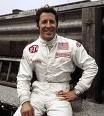
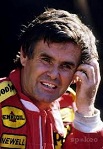





In 776 B.C.E. the gay Greeks founded the Olympics, held every 4 years. In 680 B.C.E. the 25th Olympiad added a 4-horse chariot race at the Hippodrome, becoming the only event not performed in the olive-oiled nude - I wanna be your man, I wanna be your ma-a-a-a-an? The Roman Empire conquered Greece in 146 B.C.E., but continued the Olympics. Too bad, after Rome went Christian in 313 C.E. under Emperor Constantine I the Great, it wasn't long before the Olympics were banned by his Christian successor Theodosius I the Great in 391 C.E., as if it mattered since the Western Roman Empire fell to the Goths in 476 C.E., and the Western world fell into the thousand-year Dark Ages where gentlemanly games were replaced by barbarism, which survives to modern times with the preference for violence over nudity in sports and films.


In 70 C.E. Greek mathematician-engineer Heron (Hero) of Alexandria (b. 10) dies, leaving Mechanics and Optics, describing the principle of the shortest path of light, the Babylonian method for computing square roots, and Heron's Formula for finding the area of a triangle from its sides, also the design of the first vending machine, which delivers holy water for a coin; Pneumatics, describing Heron's Steam Engine (Aeolipile), with two jets that makes it rotate on its axis, a wind wheel that operates an organ (the first wind-powered machine?), a water pump for fire engines, and the syringe - put that all together and see what kind of party you can throw?


In 1672 Flemish Roman Catholic Jesuit priest Father Ferdinand Verbiest (1623-88) AKA Nan Huairen builds (just designs?) a steam-powered vehicle for the Chinese Qing Kangxi emperor, becoming the world's first automobile?; too bad, it's too small to carry a driver or passengers?


In 1712 Thomas Newcomen (1664-1729) invents the Newcomen Steam Engine, becoming the first practical device to harness steam power to produce mechanical work, and the first great invention of an Englishman; unfortunately it uses only one chamber and is only about 1% efficient - hi, I love your purse?

In May 1765 Scottish inventor James Watt (1736-1819) (asst. of Joseph Black) patents the dual condenser steam engine (one hot and one cold) (patented in 1769), which cuts fuel consumption in the Newcomen steam engine by two-thirds, giving steam engines up to 7% efficiency, thus making them practical; he coins the marketing term "horsepower", and the Industrial Rev. is cooking with steam. In Oct. 1781 Watt patents the Sun-and-Planet Gear that makes it possible to give rotary motion to machinery via a steam engine - bringing the power of the sky down to Earth?

In 1769 French artillery officer Nicolas-Joseph Cugnot (1725-1804) builds a small 2-cylinder 3-wheeled steam carriage ("fardier a vapeur") (the first automobile?) in Paris, which can carry four people at 2 mph but lacks sufficient power and is unstable; next year he builds a larger version as a gun carriage for the French War Ministry, but it overturns as he tries to turn a corner on a Paris street, and knocks down part of the stone arsenal wall (first automobile accident), and he is sent to jail as a dangerous driver and his machine is impounded, ending up in the Conservatoire Nat. des Arts et Metiers in 1800 - if it worked we might have 100 Cugnotpower automobile engines?
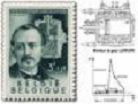



Fat whitey won't have to ride a horse much longer? In 1860 Jean Joseph Etienne Lenoir (1822-1900) of Belgium constructs the first practical internal-combustion engine, an 18 liter 1-cylinder 2-stroke mechanism burning coal gas and air and ignited by a "jumping spark" ignition system, producing 2 hp at 4% efficiency; he forms the Gauthier Co. to produce a 3-wheeled automobile, which, although noisy and unreliable causes Scientific American to pronounce the Steam Age at an end; by 1865 he builds 143 of them; meanwhile in 1863 he adds a carburetor; too bad, he fails to keep up with Nikolaus Otto et al. and his design becomes obsolete, and he dies broke. In 1860 German inventor Gottlieb Daimler invents the surface-type carburetor. In 1862 German engineer Nikolaus August Otto (1832-91) patents a crude 2-stroke internal combustion gasoline engine with a carburetor based on the 1860 illuminating gas engine of Etienne Lenoir of Belgum; German entrepreneur Eugen Langen (1833-95) partners with him to found NA Otto & Cie, the world's first engine factory; the 1867 Paris World Exhibition awards the engine their grand prize; too bad, the factory goes bankrupt, and Eugen goes on to found the Deutz factory, which later becomes Kloeckner-Humboldt-Deutz (KHD), later renamed Deutz AG.



In 1872 Am. mechanical engineer George Brayton (1830-92) of R.I. patents a 2-cylinder 2-stroke kerosone stationary engine that he calls Brayton's Ready Motor, which becomes the first safe and practical oil engine; he displays it at the 1876 Philadelphia Centennial Exposition; too bad, the 1876 Otto Engine becomes more popular. On May 8, 1879 George B. Selden (1846-1922) files the first U.S. automobile patent, based on the Brayton Engine of 1872; too bad, his filing of amendments delays things, and it's not granted until 1895.


In 1876 Nikolaus August Otto (1832-91) and Eugen Langen (1833-95) of Germany invent the gasoline-powered 4-stroke Otto Engine, the first internal combustion engine to efficiently burn fuel in a piston chamber; meanwhile fellow German Gottlieb Daimler invents the surface-type carburetor - now fat whitey doesn't have to ride a horse much longer?






In 1883 after seeing their toy locomotive in a store window in Leon and liking it, French steam carmaker De Dion-Bouton is founded in Paris, France by wealthy Marquis Jules Felix Philippe Albert de Dion de Wandonne (1856-1946) and starving scientific toymakers Georges Bouton (1847-1938), and his brother-in-law Charles Trepardoux; the first model with engine mounted in front and steering in the rear wheels burns down during the trial run; in 1884 they reverse the engine and steering, producing La Marquise, named after the marquis' mother; on Apr. 28, 1887 a De Dion steam car driven by Georges Bouton is clocked at 37 mph in "Europe's first auto race" from Neuilly Bridge to the Bois de Boulogne, sponsored by Le Velocipede ed. M. Fossier; In 1895 they invent a 1-cylinder internal combustion engine with trembler coil ignition that works best at high rpm, reaching a record 3.5K rpm; after being mounted on a tricycle frame and fitted with new Michelin pneumatic tires, it goes on the market next year as the Petite Voiture Tricar, which is a big hit, causing a 4-wheeler to be marketed in 1898, and the Model D Voiturette in 1900, which puts the engine under seat and makes the passenger face the driver, who sits in the rear; in 1898 Louis Renault modifies a De Dion-Boutin with a fixed drive shaft and ring-and-pinion gear, becoming the first hot rod?; in 1900 they become the world's largest automobile manufacturer, producing 400 cars and 3.2K engines; in 1902 the De Deion-Bouton Motorette Co. is founded in Brooklyn, N.Y. to make them in the U.S.; as a topper, in 1902 the Crazy Frog outfit comes up with the Model K, with a front-mounted engine under a crocodile hood, rear entry of passengers, and a decelerator pedal that applies a transmission brake; the co. folds in 1932.


In 1885 German engineer Karl Friedrich Benz (1844-1929) invents the modern automobile (a 3-wheeled carriage with an internal-combustion engine), which he patents on Jan. 29, 1886, and drives through the streets of Munich; meanwhile fellow German Gottlieb Wilhelm Daimler (1834-1900) patents an internal-combustion engine, which is initially used to power a motorcycle, causing the two Master Race Volk to share the credit for the first working automobile; the Benz has electric ignition, a water-cooled engine, and a carburetor, and despite a top speed of 8 mph he runs the vehicle into a brick wall, becoming the world's first automobile accident.

In 1888 brothers Andre Jules Michelin (1853-1931) and Edouard Etienne Michelin (1859-1940) found the Michelin Tire Co. in Clermont-Ferrand, Auvergne, France to manufacture tires, incorporating on May 28, 1889; in 1891 they file their first patent for a removable pneumatic tire, which is used by Charles Terront to win the 1891 Paris-Brest-Paris bicycle race, the world's first long distance bicycle race. In 1900 they pub. the first Michelin Guide for French Motorists to promote tourism by car and sell more tires.


In 1889 Armand Peugeot (1849-1915) of French bicycle maker Peugeot (founded 1810) produces his first steam tricycle, which proves unreliable; in 1890 he produces his first automobile with a Panhard-Daimler engine, 3-point suspension, and sliding gear; in 1896 he splits out the Societe des Automobiles Peugeot, and begins building engines, becoming successful in auto racing; in 1899 300 units are sold; in 1903 motorcycles are added to the product line; by 1903 Peugeot has 50% of the French automobile market; by the 1930s their trademark becomes the protected position of the headlights behind the grill; in 1974 Peugeot buys 30% of Citroen, and takes it over completely in 1975; in Feb. 2014 the Peugeot family agrees to give up control in return for the French govt. and Dongfeng Motors of China each buying 14% stakes, giving the three partners equal voting rights.
In 1890 Riley Motor Co. is founded in Coventry, England as the Riley Cycle Co. by William Riley (1851-1944), William Victor Riley (1876-1958) et al.; in 1926 it introduces a fabric-body saloon car with the new Riley 9 engine, which features hemispherical combustion chambers and inclined overhead valves, becoming the most important engine development of the 1920s, going on to introduce different body styles incl. the Continental, Deauville, Edinburgh, Falcon, Gamecock, Imp, Kestrel, Lincock, Lynx, Merlin, Monaco, MPH, Sprite, Stelvio, Victor, and Winchester. in 1938 it is acquired by Morris Motors; in 1968 it merges with British Leyland Motor Corp.

In 1891 Arthur Constantin Krebs (1850-1935) of France designs the Panhard, the first practical gasoline-powered automobile, with four wheels, a front-mounted engine and rear-wheel drive, a crude sliding-gear transmission with an electromagnetic gearbox, and the first castor-angled front wheels, all of which he patents in May 1896; in 1898 Krebs replaces the tiller with an inclined steering wheel with non-reversible steering, and engine balance; in 1901 he begins using nickel steel alloys; in 1902 he invents the automatic diaphragm carburetor; in 1906 he invents the shock absorber; in 1905 he invents the electric brake dynamometer for engine testing; in 1907 he invents the multi-disc clutch; in 1911 he invents the elastomeric flexible coupling (Flector joint); in 1915 he invents the worm gear differential; in 1898-1902 Panhard et Levassor builds 500 cars under license, going on to become one of the largest automobile manufacturers before WWI.
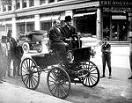

In 1892 Karl Benz builds his first 4-wheel car; meanwhile Henry Ford builds his first car, and in 1893 Ill.-born brothers Charles Edgar Duryea (1861-1938) and James Frank Duryea (1869-1967) build the Duryea Automobile, complete with the first pneumatic tires, becoming the first successful automobile produced in the U.S. On Nov. 28, 1895 (Thanksgiving Day) a 54.36 mi. auto race (first in the U.S.) is held in Chicago, Ill., and James Frank Duryea wins in 7 hours 17 min. at an avg. speed of 7.5 mph using a 4-cycle engine; in 1895 the Duryea Brothers found Duryea Motor Wagon Co. in Springfield, Mass., but it folds in 1898.

In 1892 Rutenber Manufacturing Co. is founded in Chicago, Ill. by Edwin A. Rutenber (1876-1962) to manufacture internal-combustion engines for vehicles, starting with a 1-cylinder engine; in 1898 they produce the first 4-cylinder engine in the U.S.; in June 1902 they change their name to Western Motor Co. and relocate to Logansport, Ind.; Rutenber sells out in 1912, and it is renamed Rutenber Motor Co.

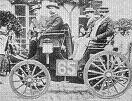
On July 22, 1894 after sponsoring the Paris-Brest-Paris cycle race in 1891, and the Paris-Belfort running race in 1892, the 5K-franc Paris-Rouen Horseless Carriage Competition, sponsored by Pierre Giffard (1853-1922) of Le Petit Journal, the world's first competitive motor race (although the ad says "it will not be a race") is preceded by four days of exhibitions and qualifying events in front of large crowds is won by Marquis Jules Albert de Dion (1856-1946), who is disqualified because his steam vehicle needed a "stoker", making the winner Albert (Georges) Lemaitre (1864-1906) in his 3hp Peugeot Type 7.


On Nov. 5, 1895 George B. Selden (1846-1922) of N.Y. is granted a U.S. patent for the gasoline-powered automobile after filing on May 8, 1879; local bank teller George Eastman is a witness; in 1899 he sells a license to William Collins Whitney (1841-1904) (U.S. secy. of the Navy in 1885-9), owner of the monopolistic Electric Vehicle Co. (1897-1907), and works to collect a 0.75% royalty from all cars sold by the Assoc. of Licensed Automobile Manufacturers, later founding Selden Motor Vehicle Co.; after Ford Motor Co. is founded in 1903, they take him on in a mammoth 8-year case that generates 14K case pages, and Selden wins, but Ford wins the appeal on Jan. 10, 1911 because his engines are based on the 1876 German Otto Engine, not the 1872 Brayton Engine of R.I. inventor George Brayton (1830-92).

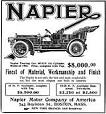

In 1895 English steam engine maker Napier and Son (founded 1808) is inherited by Montague Stanley Napier (1870-1931), who goes into automobile manufacturing, converting a Panhard "Old Number 8" from a tiller to a steering wheel, and improving the oiling, then designing their own engines in 1900; in 1907 they are producing 100 cars a year, rising to 700 by 1912, many for use as London taxis, promoting their use in auto racing and winning many victories until 1908; in 1917 they introduce the 12-cylinder 1,375 hp Napier Lion W (triple-four) aluminum block aircraft engine, most powerful in the world until the 1930s; they get out of the car business in 1924 after building a total of 4,258 to concentrate on engines.

On June 4, 1896 Henry Ford (1863-1947) makes his first successful pre-dawn test-drive of his horseless carriage Quadricycle on the streets of Detroit, Mich.; meanwhile Charles B. King manufactures the first automobile in Detroit.


On Sept. 24-Oct. 3, 1896 the 1.71km 1896 Paris-Marseille-Paris Race, the world's first open motor race has 31 entrants, and is won by Emile (Émile) Mayade (1853-98) (who came in 7th in the 1894 Paris-Rouen race) in an 8 hp Panhard et Levassor, the first-ever 4-cylinder car.



In 1896 after selling his Gladiator Bicycle Co., Pierre Alexandre Darracq (1855-1931) founds Automobiles Darracq S.A. in Suresnes (near Paris), France, expanding by 1905 to Britain, Italy, and Spain; in 1900 they produce their first car, the Darracq 6-1/2 HP, with a wood chassis, which sells 100 units; in 1902 they begin producing cars in Germany with Adam Opel; in 1904 they produce the Darracq Flying Fifteen, with a pressed steel chassis, capturing 10% of the French market; in 1920 the British arm buys it out, then sells it to the Rootes group in 1935, ending it as a distinct marque.



In 1896 Geneva, Ohio-born automotive pioneer Ransom Eli Olds (1864-1950) races Grangemouth, Scotland-born automotive pioneer Alexander Winton (1860-1932) in his Olds Pirate racing car at Daytona Beach, Fla., beating him by 0.20 sec.

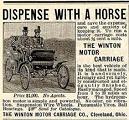

On Mar. 15, 1897 Winton Motor Carriage Co. is incorporated in Cleveland, Ohio by Scottish-born bicycle manufacturer Alexander Winton (1860-1932), who in May introduces a 10 hp model that achieves an astounding speed of 33.64 mph on a local horse track; to silence criticism about durability, Winton makes an 800-mi. endurance run from Cleveland to New York City; on Mar. 24, 1898 Robert Allison of Port Carbon, Penn. becomes his first customer after responding to an ad in Scientific American; in 1898 Winton sells 22 cars, and produces the world's first semi-truck, selling the first one in 1899; in 1898 he sells one to James Ward Packard, who after showing dissatisfaction is challenged by Winton to do better, causing him found his own co.; in 1899 Winton sells 100+ cars, making his co. the largest gas-powered automobile manufacturer in the U.S., causing H.W. Koler to open the first automobile dealership in the U.S. in Reading, Penn., for which Winton builds the first auto-hauler; in 1901 news that Reginald Vanderbilt and Alfred Vanderbilt purchased his cars boosts the co. image; too bad, after failing to keep up with technical developments, the co. ceases production on Feb. 11, 1924, but continues to sell engines, specializing only in marine engines by 1936, becoming popular with the U.S. Navy in WWII; it goes defunct in 1962.




In 1898 Hispano Suiza (Spanish-Swiss) (original name La Cuadra) is founded in Barcelona, Spain by artillery capt. Emilio de la Cuadra and Swiss engineer Marc Birkigt (1878-1953) to build gasoline engines, with a stork logo; in 1902 they sell it to J. Castro, who goes bankrupt in Dec. 1903, and on June 14, 1904 it is restructured, opening the assembly factory Hispano France in 1911 in the Paris suburb of Levallois-Perret; in 1911 they design the first 4-cylinder 16-valve engine, and the first real sports car, the Hispano Suiza 45 Cr; in 1919-33 they produce the luxurious "car of the century" H6, with an inline 6-cylinder overhead camshaft engine based on their WWI V8 aluminum aircraft engine; in 1923 the French subsidiary becomes semi-autonomous.




On Feb. 25, 1899 Renault S.A. (originally Societe Renault Freres) is founded in France by brothers Louis Renault (1877-1944), Marcel Renault (1872-1903), and Fernand Renault (1865-1909), producing the Renault Voiturette 1CV in 1898-1903, with a revolutionary universally-jointed driveshaft and 3-speed gearbox with reverse, and the 3rd gear in direct drive, growing to a top French automobile manufacturer, producing the Renault FT tank in WWI; Marcel Renault dies on May 25, 1903 of injuries in a Paris-Madrid auto race; too bad, Louis Renault is accused of collaborating with the Germans in WWII, and the co. is nationalized.


On July 11, 1899 the Fiat Motor Co. (Fabbrica Italiana di Automobili Torini) is founded in Turin, Italy by a group of investors incl. Giovanni Agnelli (1866-1945), who becomes dir. in 1900, and chmn. in 1920; in 1903 it manufactures 135 cars, growing to 1,149 in 1906, when it goes public on the Milan exchange and founds its first U.S. dealer in Manhattan, N.Y., growing to 3rd largest Italian industrial co. by the end of WWI; in 1968 it acquires Lancia; in 1969 it buys shares in Ferrari; in 1986 it takes control of Alfa Romeo from the Italian govt.; in 1993 it purchases Maserati; by 2013 it becomes the 7th biggest world automaker, and 2nd largest in Europe; on Jan. 29, 2014 it becomes full owner of Chrysler Group LLC, becoming Fiat Chrysler Automobiles NV.

On Sept. 13, 1899 real estate salesman Henry Hale Bliss (b. 1830) becomes the first person in the U.S. to be killed in an automobile accident in the U.S. when he is hit by a cab in New York City after leaving a streetcar at W. 74th St. and Central Park West, and dies the next morning; taxi driver Arthur Smith is tried for manslaughter and acquitted; his passenger Dr. David Edson is the son of former New York City mayor Franklin Edson; on Sept. 13, 1999 a plaque is dedicated on the site.




In 1899 Buick Motor Co. (originally Buick Auto-Vim and Power Co.) is founded by Scottish-born bathtub maker David Dunbar Buick (1854-1929) (inventor of the overhead valve engine) in Detroit, Mich., incorporating on May 19, 1903; in 1903 Buick sells out to James H. Whiting (1842-1919) of Flint Wagon Works, who moves it to his hometown of Flint, Mich, and hires William Crapo "Billy" Durant (1861-19470 in 1904 to manage it, producing the Buick Model B in 1904, with a amidships-mounted flat-twin engine that presents torque to the chassis longitudinally to prevent lateral motion along with a living room coach ("moving couch of America"), after which Buick becomes the biggest car maker in the U.S.; Louis Chevrolet becomes a test driver; in 1911 Buick introduces the first closed-body car, four years ahead of Ford; in 1931 Buick debuts the OHV Buick Straight-8 (Fireball 8) Engine and the Synchromesh Transmission, which become a hit with Edward VIII and George VI of England.






In 1899 the Locomobile Co. of Am. (locomobile = locomotive + automobile) is founded by Cosmopolitan mag. ed.-publisher John Brisben Walker (1847-1931), who buys the plans for a steam-powered vehicle from twins Francis Edgar Stanley (1849-1918) and Freelan Oscar "Freel" Stanley (1849-1940) for $25K, then sells a half share to asphalt tycoon Amzi Lorenzo Barber (1843-1909), then quits two weeks later and goes on to found Mobile Co. of Am.; the co. begins producing small $600 Stanley Steamer motor cars, with Pres. McKinley taking a ride in a Stanley Locomobile, helping boost popularity; in 1900 sales peak at 1.6K, after which they go into internal combustion engines in 1902 after poor performance causes Rudyard Kipling to describe them as a "nickel-plated fraud", selling the rights back to the Stanley twins for $20K in 1903; too bad, the 1904 2.2K lb. 16 hp straight-4 internal combustion Locomobile Touring Car sells for $4.5K, limiting their market; in 1922 Locomobile is acquired by Durant Motors (founded 1921), which goes bankrupt in 1931.


On June 14, 1900 the first Gordon Bennett Cup internat. auto race from Paris to Lyons, France , sponsored by New York Herald publisher James Gordon Bennett Jr. (1841-1918) is won by Fernand Charron (1866-1928) in a Panhard, who starts at 3:00 a.m. and arrives at 12:23 p.m.; on the recommendation of Count Eliot Zobrowski, each nation's cars are assigned a unique color: France: blue (Bleu de France), Belgium: yellow, Germany: white, Italy: red (Rosso Corsa) (1907), U.S.: white with blue stripes, or vice-versa; since auto racing is still illegal in England, the 1903 race is held in Ireland, spawning British Racing Green (supposed to be shamrock green); the last race takes place on July 5, 1905 near the Michelin tire factory in Clermont-Ferrand; the first four places go to cars with you know what kind of tires.


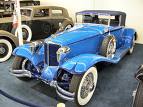



In 1900 Auburn Automobile Co. is founded in Auburn, Ind. from Eckhart Carriage Co. (founded 1874) by founder Charles Eckhart's sons Frank and Morris Eckhart; in 1904 they produce a $1K 1-cylinder 10 hp 2-speed touring car with a tonneau; after WWI forces them into bankruptcy, they sell out to a group of Chicago investors led by Ralph Austin Bard (1884-1975), who later becomes asst. Navy secy. under Pres. Franklin D. Roosevelt; in 1924 after it doesn't prove profitable they sell it to Errett Lobban "E.L." Cord (1894-1974), who in 1926 acquires Duesenberg Motor Corp. to produce high-priced luxury vehicles incl. the Cord L-29 in 1929, the first front-wheel drive automobile manufactured in the U.S.; in 1933 they produce the Cord Speedster, followed in 1935 by the Auburn 851 Speedster, followed in 1936 by the Cord 810/812, the first U.S.-designed and built front drive car with independent suspension, and the first to offer hidden headlights; in 1936 they produce the Auburn Boattail Speedster, designed by Packard-GM-Stutz-Duesenberg designer Gordon Miller Buehrig (1904-90), with 4.6L straight-8 and supercharger option that can do 100 mph; the co. folds in 1937.



In 1900 Niles, Mich.-born brothers Horace Elgin Dodge Sr. (1868-1920) (the mechanic) and John Francis Dodge (1864-1920) (the salesman) found the Dodge Brothers Co. to supply parts and assemblies for Detroit automakers incl. Ford, producing complete automobiles with all-steel bodies with baked-on enamel in 1915; after both brothers die of influenza in 1920, the co. is sold by their widows for $146M to Dillon, Read & Co. in 1925, who sell it to Chrysler in 1928.
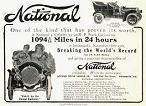
In 1900 the National Motor Vehicle Co. is founded in Indianapolis, Ind. to manufacture electric vehicles, starting with Style A in 1900, with tiller steering; in 1903 they produce 2-cylinder and 4-cylinder internal combustion cars, with engines by Rutenber; in 1904 they introduce the $2K 9 hp 4-speed electric National Tonneau; in 1906 they introduce a 6-cylinder car with circular radiator; in 1906 they make their last electric cars, and in 1907 begin building their own engines; in 1912 Joe Dawson wins the Indy 500 in a National; in 1915 production peaks at 1.8K; in 1916 they introduce the 12-cylinder National Highway Twelve, but WWI inflation kills business, and in 1922 it is merged into Associated Motor Industries; in 1924 it becomes defunct.

In 1901 French cyclist Maurice Alain Farman (1877-1964) wins the Grand Prix de Pau (Grand Prix du Sud-Ouest), the first-ever grand prix in his 24 hp Panhard automobile.

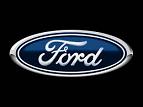

In 1901 Detroit mechanic Henry Ford (1863-1947) defeats rival Scottish-born auto builder Alexander Winton (1860-1932) in an auto race (his only race) in Grosse Pointe, Mich., and uses the winnings to finance the Ford Motor Co. and roll his first iron horse off his Dearborn assembly line; after telling him that he would get killed using his clumsy steering assembly, Winton gives him one of his complete working mechanisms; the defeat causes Winton to produce the 1902 Winton Bullet, which sets a land speed record of 70 mph in Cleveland, but is defeated by Barney Oldfield in a Ford.


In 1901 "King of Constructors" Wilhelm Maybach (1846-1929), tech. dir. of the Daimler auto works builds the first Mercedes automobile, named after Daimler's niece; the motto is "The best or nothing at all"; in 1926 it merges with the cos. of Karl Benz and Gottlieb Daimler to become Mercedes-Benz.



In 1901 the Pierce-Arrow Motor Car Co. (originally the George N. Pierce Co.) is founded in Buffalo, N.Y. by George N. Pierce (1846-1910) to produce expensive luxury cars, along with trucks, trailers, motorcycles, and bicycles, introducing the Motorette at the 1901 Pan-American Exposition; in 1904 they produce the Great Arrow, becoming their most successful product, winning the 1905 Glidden Trophy, causing them to officially change their name to Pierce-Arrow in 1907; in 1909 Pres. Taft orders two Pierce-Arrows and two White Model M Tourers, becoming the first official cars of the White House; in 1914 they set a trend by moving the headlights from the sides of the radiator to the front fenders; an open-body Pierce-Arrow carries Pres. Wilson and Pres. Harding to Harding's 1921 inauguration; the cars become popular with movie stars and royalty, becoming one of "the three Ps of Motordom" along with Peerless and Packard; too bad, they fail to produce a low-priced line in the Depression years, going bankrupt in 1938.



In 1901 Singer Motors Ltd. is founded in Coventry, England by bicycle manufacturer George Singer (1847-1909), becoming the first to produce a practical small economy car, the 4-cylinder 10 hp Singer 10, with their own 1,100cc engine, introduced in 1911; in 1956 the co. sells out to the Rootes Group; the brand goes defunct in 1970.



On Mar. 4, 1902 the Am. Automobile Assoc. (AAA) is founded in Chicago, Ill. by nine clubs with 1.5K total members, growing to 51M members by 2010; it founds the AAA Racing (Contest) Board to officiate the Vanderbilt Cup internat. auto race in Long Island, N.Y., and goes on to sanction the Indianapolis 500 in 1905, 1916, 1920-41, and 1946-55; in 1902-13 the Glidden Tours, named after wealthy telephone pioneer (inventor of the telephone exchange, preferring female voices) Charles Jasper Glidden (1857-1927) (who this year became the first to circle the world in an automobile, a British Napier with his wife Lucy, repeating it in 1908) are organized by the AAA to test "reliability and endurance" in a gruelling road rally through nearly impassible country roads, with drivers making repairs on the fly and helping each other between scaring horses and causing property and personal damage; starting in 1905 Glidden donates a $2K prize and the silver Glidden Trophy.
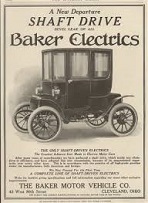
On May 31, 1902 (Sat.) speed trials in Staten Island, N.Y. before a crowd of 10K sees the 7 hp 3K lb. Baker Electric Car from Baker Motor Vehicle Co. of Cleveland, Ohio come in 2nd at the 1km mark at 36.2 sec. before spinning out of control and crashing into the crowd, causing owner-driver W.C. Baker (b. 1870) and his asst. C.E. Denzer to be arrested, after which on June 3 the Automobile Club of Am. announces that it will no longer sanction automobile speed trials on public highways, and will authorize officials to ban cars they consider dangerous or unsuitable; it ran on 40 lead-zinc Gould batteries.


On Aug. 2, 1902 Vt.-born Henry Martyn LeLand (1843-1932), inventor of electric barber clippers and the Leland-Detroit Monorail toy train founds the Cadillac Motor Co. (named after Detroit founder Antoine Laumet de La Mothe, Sieur de Cadillac) from the Henry Ford Co. to produce a 1-cylinder car originally developed for Oldsmobile, pioneering the use of interchangeable parts; on July 29, 1909 he sells Cadillac to Gen. Motors for $4.5M, remaining as an executive, pushing Charles Kettering to develop an electric self-starter after one of his engineers is hit in the head and killed by a starting crank when an engine backfires.



In 1902 the Thomas B. Jeffery Co. is founded in Kenosha, Wisc. by Stoke, Devon, England-born bicycle manufacturer Thomas Buckland Jeffery (1845-1910) (inventor of the clincher rim for tires in 1882), producing the Rambler ("Kenosha Cadillac") ("the car for country roads"), which he first built in 1897, becoming the first car with a spare wheel-tire assembly.



In 1902 after his Olds Motor Works burns to the ground last Mar. 9, Olds creates the first automotive assembly line for the $650 Curved Dash Oldsmobile, increasing production 5x using wooden wheeled platforms to hold the cars as parts are added, becoming the first mass-produced low-priced U.S. motor vehicle, selling 425 in 1901, 2.5K in 1902, and 19K by 1907 when it discontinues production; in 1904 after clashes with co-owner Frederic L. Smith, Olds leaves the co. and forms REO Motor Car Co., which is sold to General Motors in 1908, and discontinues production in 2004 - it's not your father's Oldsmobile?

In 1902 "London Daily Mail" pub. Alfred Harmsworth (1865-1922), the first person in England to drive a Mercedes-Benz founds the Harmsworth Cup for motorboat racing; in 1905 he is created Baron Northcliffe, then 1st Viscount Northcliffe in 1918; in WWI his anti-German propaganda pisses-off the Huns so much that they send battleships to shell his house; too bad, when the Nazis arrive, his surviving partner-brother Harold Harmsworth, who is created 1st Viscount Rothermere in 1910 pushes an appeasement policy because three of his sons were KIA or went missing in one week in WWI.
In 1902 automobile and motorcycle races begin to be held on 4.2-mi.-long Daytona Beach Road Course in Fla., whose hard-packed white sand is ideal for speed trials; closed on Feb. 23, 1958.
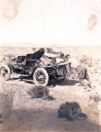
On May 23, 1903 Vt. doctor H. Nelson Jackson and his mechanic Sewell Crocker begin the first cross-country automobile trip in San Francisco, Calif., ending up in New York City on July 26 (63 days, 19 lost waiting for supplies and auto parts) in a $3K red windshield-less Winton brand motor carriage named Vermont; they take on a goggled bulldog named Bud in Idaho, who adds to the turn-of-the-cent. fame game, and win a $50 bet at a cost of $8K.

On June 20, 1903 at the Indiana State Fairgrounds in Indianapolis, Berna Eli "Barney" Oldfield (1878-1946) becomes the first driver to run a 1 mi. track in 1 min. (60 mph); in 1910 he drives a Benz at 133 mph in Daytona Beach, Fla.; the expression "Who do you think you are, Barney Oldfield?" becomes popular. On Sept. 11 the first auto race is held at the Milwaukee Mile in West Allis, Wisc.; William Jones of Chicago wins the 5-lap race, setting a track record of a 72 sec. lap (50 mph); Barney Oldfield sets the track record in 1905, and again in 1910 (70.159 mph) in his Blitzen Benz; in 1911 Ralph De Palma wins the first Milwaukee Mile Championship Car Race in his Golden Submarine.



In 1903 Vauxhall Motors Ltd. (Vauxhall Iron Works until 1907) of Luton, Bedfordshire, England (founded 1857 in London to manufacture marine engines) begins manufacturing automobiles, producing 70 5 hp 1-cylinder cars with a tiller, two forward gears and no reverse gear, adding a steering wheel and reverse gear in 1904; in Oct. 1908 after the Y-Type Y1 race car wins the 1908 RAC and Scottish 2000 Mile Reliability Trials, they begin producing the 20 hp Vauxhall A-Type (until 1914), which on Oct. 26, 1910 becomes the first 20 hp car to exceed 100 mph; in 1913-22 they produce the Vauxhall 30-98 4-seat open touring car, becoming the last of the Edwardians and "the first and perhaps the best British sports car" (Automobile Quarterly); the co. is acquired by GM in 1925.



On May 4, 1904 British auto salesman and electric crane manufacturer Charles Stewart Rolls (1877-1910) and British auto engineer Frederick Henry Royce (1863-1933) meet at the Midland Hotel in Manchester, and decide to form a partnership, producing their first 4-cyl. car in Dec., then forming Rolls-Royce Ltd. on Mar. 15, 1906; in 1931 they acquire rival car maker Bentley; in 1933 they change the logo color from red to black because so many customers choose red; in 1971 after the costs of developing the RB211 jet engine cause it to go bankrupt, the co. is nationalized, then privatized again in 1987.

On June 20, 1904 the Federation Internationale de l'Automobile (FIA) is founded in Paris to represent automobile enthusiasts and orgs., becoming the governing body for many auto racing events incl. Formula One and World Rally Championship races, also certifying land speed records; by modern times it has 213 nat. member orgs. in 125 countries worldwide; the International Olympic Committee (IOC) doesn't grant it full recognition until 2013.


On Oct. 8, 1904 the first Vanderbilt Cup internat. auto race is held on the dirt roads of Nassau County, Long Island, N.Y., becoming the first major U.S. auto race, founded with an enticingly large prize by William Kissam Vanderbilt II (1878-1944) (who earlier this year set a land speed record of 92.30 mph in a Mercedes at Daytona Beach), with large crowds eager to see an American car beat the Euro cars; too bad, it's won by Long Island native George Heath (1862-1943) in a French Panhard in 6 hours 56 min. 45 sec., with an avg. speed of 52.2 mph; it takes until 1908 for George H. Robertson (1884-1955) of Garden City, N.Y. to win in an American car, a Locomobile, becoming the first U.S.-built car to win in internat. competition; in 1911 it moves to Savannah, Ga., followed in 1912 by Milwaukee, Wisc., and 1914 and 1916 by Santa Monica, and San Francisco, Calif. in 1915; it is cancelled in 1917-36.
On May 8-June 22, 1905 the first Transcontinental U.S. Auto Race is run from New York City to the World's Fair in Portland, Ore., crossing the Oregon Trail by Oldsmobile.


In 1905 the Austin Motor Co. in Longbridge (near Birmingham), England is founded by Sir Herbert Austin, 1st Baron Austin (1866-1941) to produce luxury cars that become hits with British and Russian nobility et al.; they also dabble in racing cars; in 1952 they merge with Morris Motors; the Austin marque is retired in 1987.

On June 26-27, 1906 the first French Grand Prix is held outside Le Mans, France; the winner is Hungarian-born driver Ferenc Szisz (1873-1944), who drives a Renault at an avg. speed of 62.88 mph, and wins 45K French francs (13kg of gold).



On Nov. 29, 1906 Lancia & Co. is founded in Turin, Italy by Fiat racing drivers Vincenzo Lancia (1881-1937) and Claudio Fogolin (1872-1945), producing the 28 hp 4-cylinder Alpha 12 HP (Tipo 51) in 1907-8, selling 100 units; in 1913-18 they produce the Lancia Theta (Tipo 61), becoming the first Euro production car with a complete electrical system incl. starter motor; in 1922-31 they produce the Lancia Lambda, which features Sliding Pillar independent front suspension and load-bearing monocoque body along with shock absorbers and 4-wheel brakes; in 1948 they produce the first production car with a 5-speed gearbox; in 1950-8 they produce the Lancia Aurelia, with the first full-production V6 engine, combination transaxle, and radial tires; too bad, they never get into mass-production, making the cars by hand, holding them back, and Fiat acquires it in 1969.
In 1906 a 200 hp V-8 Darracq French automobile reaches 122.4 mph (2 mi./min.) and wins a race at Daytona Beach, Fla.




In 1907 Col. Robert Samuel McLaughlin (1871-1972) of Canada founds the McLaughlin Motor Co., which next year becomes Gen. Motors of Canada, and McLaughlin partners with Buick Co. pres. (since 1904) William Crapo "Billy" Durant (1861-1947) to build Buick power trains, producing McLaughlin Buicks (until 1942); in 1915 McLaughlin founds the Chevrolet Motor Co. of Canada. On Sept. 8, 1908 Durant founds General Motors Co. (GMC) (GM) in Flint, Mich. as a holding co., then sells stock to allow him to purchase Oldsmobile and Cadillac; next Oct. 26 after the patent suit George B. Selden (1846-1922) of N.Y. against Ford Motor Co. claiming invention of the automobile reaches a record 14K pages, GM offers to buy Ford out for $2M in cash, plus $4M at 5% interest over three years, with Ford retaining the rights to motorized farm implements; too bad, the banks refuse to float the loan, and in the 1910 financial panic GM's board fires Durant and let bankers take over the co., causing Durant to hire retired Buick auto racer Louis Chevrolet and set up Chevrolet Motor Co. in Detroit, Mich. on Nov. 3, 1911; after Selden wins the suit, Ford appeals, and on Jan. 10, 1911 wins based on the argument that Ford uses the Otto engine not Selden's engine.

In 1907 the Metz Co. of Waltham, Mass. is founded to produce brass era automobiles, incl. the 1914 $475 4-cylinder 22.5 hp Model 22 2-seat torpedo roadster ("winner of the Glidden Tour") and the $250 Success, offering the first kit automobile on the installment plan (until 1911); it goes bankrupt in 1922.
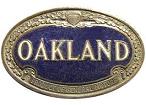
In 1907 the Oakland Motor Car Co. is founded in Pontiac, Mich., becoming a div. of Gen. Motors (GM) in 1909-31; in 1916 it introduces a V8 engine.
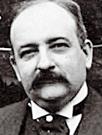
In 1907 French gastronome Curnonsky "Cur" (Maurice Edmond Sailland) (1872-1956) coins the name "Bibendum" for the Michelin Man, because "Michelin tires drink everything [nails], even obstacles"; on Nov. 25 he begins pub. the weekly column "Les Lundis de Michelin" in Le Journal.
On Mar. 7, 1908 Cincinnati, Ohio mayor Mark Breith tells the city council: "Women are not physically fit to operate automobiles."

On Oct. 1, 1908 Ford Motor Co. begins producing the epoch-making inline 4-cylinder Ford Model T (Tin Lizzie, named for a reliable servant) in Dearborn, Mich. (until May 27, 1927), causing automobiles to come rapidly into use by the masses; for $825 you get 20 hp, top speed of 45 mph, and gas economy of 13-21 mpg, with the ability to run on gasoline, kerosene, or ethanol; a trembler coil system replaces expensive magnetos, but requires a starting battery and AC alternator; it sells 10.6K units the first year, with Henry Ford writing the soundbyte in 1909: "Any customer can have a car painted any color that he wants so long as it is black", although they come in grey, green, blue, and red until 1912, then midnight blue with black fenders, finally black-only in 1914, with 30 different types of black paint used; the Model T doubles as a tractor and portable engine for farm use; mass-production lowers the price to $300 by 1926, and 15M are eventually sold; long-distance transportation of passengers and goods are not done by road until 1914.




On Feb. 20, 1909 eight Detroit, Mich. businessmen incl. Joseph Lowthian Hudson (1846-1912) of Hudson's Dept. Store and Roy Dikeman Chapin Sr. (1880-1936) found the Hudson Motor Car Co., and on July 3 begin producing the 4-cylinder $900 Hudson Twenty, selling 4K the first year, and 4,508 in 1910, featuring the first dual brakes, dashboard oil pressure and generator warning lights, and balanced crankshaft; in 1912 a 6-cylinder model is introduced, becoming the first low-priced car that can do 60 mph; in 1916 the Hudson Super Six straight-six engine is introduced; they also become the first in the U.S. to switch from wood to lighter steel bodies.

In Feb. 1909 the Hupp Motor Co. of Detroit, Mich., founded by brothers Robert Craig Hupp (1877-1931) and Louis Gorham Hupp (1872-1961) introduces its first car at the Detroit Auto Show, the Hupmobile Model 20 (until 1912); in 1912 they introduce all-steel bodies along with BSA in England; in 1931 they introduce the free-wheeling transmission that saves gas; in 1932-3 they produce the flashy Hupp Cyclefender roadster; in 1934 they introduce the Aerodynamic coupe, with sloping windshield and wide doors; the co. becomes defunct in 1940.



In 1909 Italian-born artist Ettore Arco Isidoro Bugatti (1881-1947) founds Automobiles Ettore Bugatti in Molsheim, Alsace to build race cars, becoming known for beautiful cars esp. the Bugatti Type 35 (1924) (with an arch-shaped radiator) that score many race victories incl. the first Monaco Grand Prix in 1929; too bad, Bugatti dies in 1947 after his son Jean Bugatti precedes him in 1939, and the co. limps along only until 1963 after selling only 8K cars.

In 1909 Indianapolis Motor Speedway in Indianapolis, Ind. is built, with a permanent seating cap. of 257,325, expandable to 400K, becoming the highest-capacity sports venue on Earth, becoming the home of the Indianapolis 500 and Brickyard 400, with a 2.5-mi. flat track in a rectangular oval with four 1/4-mile turns, two 5/8-mile straightaways, and two 1/8-mile straightaways (short chutes) between turns 1-2 and 3-4; National Motor Vehicle Co. pres. Arthur C. Newby is one of the investors.


On June 24, 1910 Alfa Romeo Automobiles S.p.A. is founded in Milan, Italy by Alexandre Darracq et al. to build sports cars, starting with the A.L.F.A. 24 HP.







Gentlemen, start your engines? A year before the Titanic, Euros and Americans use lethal hi tech to create a modern version of the Roman gladiator spectacle? On May 30, 1911 (Tues.) (Decoration Day) after the Speedway is opened for free practice on May 1, and each car is given three attempts to qualify at a quarter-mile in 12 sec. (75 mph), and 40 of 46 entrants qualify (max engine size 600 cu. in., min. weight 2,300 lb.), retired Marmon Motor Car Co. engineer Ray Harroun (1879-1968) wins the first 200-lap 1911 (1st) Indianapolis 500 auto race in the pink Indianapolis Motor Speedway "Brickyard" with an avg. speed over 500 mi. of 74.59 mph; starting position is determined by date of entry; cars line up five to a row, except the first (pole position) and last; Speedway pres. ("the Hoosier Barnum") Carl Graham Fisher (1874-1939) (who convinced the other investors to install 3.2M bricks on the Speedway) leads in a Stoddard-Dayton pace car, becoming the first known mass-rolling start of an auto race; defending AAA nat. champ Harroun is the first driver to compete without a riding mechanic, and the first to use a rear-view mirror on his self-designed 6-cylinder Marmon Wasp (with a sharp-pointed tail); after the red ("clear course ahead") flag, Johnny Aitken (1885-1918) takes the lead in his National from the 4th starting spot on the extreme outside of the first row, and holds it until lap 5, when Spencer Wishart (1889-1914) passes in his Mercedes Benz, soon to be overtaken by David Loney Bruce-Brown (1887-1912) in his Fiat, who dominates the first half, after which Harroun takes the lead, only to be overtaken by Cyrus Patschke (1889-1951) for 35 laps; midway through the 2nd half, Harroun battles Lozier driver Ralph Kirkman Mulford (1884-1973), with Harroun holding a small lead near the 340 mi. mark when one of his solid tires lets go, forcing him to pit, putting Mulford in the lead, but he soon pits to get new tires and/or is given a checkered flag and takes 3 safety laps only to find Harroun in the winner's circle, and Harroun ends up winning, after which Mulford files a protest, which is denied; 14 cars fail to finish, and riding mechanic Sam Dickson is the only fatality, killed when driver Arthur Greiner (1884-1916) hits the wall in lap 12, becoming the first to finish the race last; Harroun wins $10K, then re-retires (sic).





On Nov. 3, 1911 Swiss-born Buick race car driver Louis Joseph Chevrolet (1878-1941) and ex-GM head William Crapo "Billy" Durant (1861-1947) found the Chevrolet (Chevy) Motor Co. (with a bowtie logo modified from the Swiss cross?), which sets up a plant at 57th St. and 11th Ave. in New York City in 1913; their first production model is the $2.5K 1912 Classic Six, followed by the $750 194 Royal Mail Roadster, the $875-$1,475 1914 Baby Grand Touring Car, and the $490 1916 Chevrolet Four-Ninety; commercial success allows Durant to buy control of GM on Sept. 16, 1915; in 1916 the Chevrolet brothers Louis, Gaston Chevrolet (1892-1920) and Arthur Chevrolet (1884-1946) found the Frontenac Motor Co. to make racing parts for Ford Model Ts, becoming known for their Fronty-Ford racers; Louis competes in the Indianapolis 500 4x, finishing 7th in 1919; Arthur competes 2x, and Gaston wins in 1920, also winning the 1920 AAA Nat. Championship.

In 1911 Nissan Motor Co. in Yokohama, Japan is founded as the Kwaishinsha Motor Car Works (named after founding families Kenjiro Den, Rokuro Aoyama, and Meitaro Takeuchi), producing the DAT car in 1914; in 1928 the Nihon Sangyo (Japan Industries) holding co. is founded, growing to 74 cos. by WWII; in 1934 the Nissan Motor Co. is spun off, producing Austin Sevens under license; in 1966 it merges with Prince Motor Co., producing the R380 race car; in 1960 the U.S. subsidiary Nissan Motor Corp. USA is formed, producing the 411 series, the Datsun 510, and Datsun 240Z, growing to become the 6th largest automaker in the world, and 2nd in Japan behind Toyota.




In 1911 after one of its cars places 11th in the first Indianapolis 500, earning it the slogan "The car that made good in a day", the Stutz Motor Co. (originally Ideal Motor Car Co.) is founded in Indianapolis, Ind. by ex-Ohio farmboy Harry C. Stutz (1876-1930), producing hi-performance roadsters incl. the 4-cylinder T-head Stutz Bearcat in 1912-23; in 1919 Stutz sells the co. to Allen Ryan, who goes bankrupt in 1922, and is bought out by Charles M. Schwab et al., who repurpose the co. as a manufacturer of safety cars with safety glass, low center of gravity, and Noback hill-holding transmission; in 1927 a Stutz sets the world speed record, averaging 68 mph for 24 hours; in 1928 a Stutz finishes 2nd at the 24 Hours of Le Mans, losing to a Bentley, becoming the best result for a U.S. car until 1966; in 1928 a Stutz sets a land speed record of 106.53 mph at Daytona Beach, Fla.; in 1931 they produce the DV32 DOHC 32-valve inline 8 engine; in 1929-31 the Stutz Blackhawk is produced; production ends in 1935 after 35K are produced; in 1968 New York banker James O'Donnell founds Stutz Motor Car of Am., producing the Blackhawk in 1971-87, featuring GM running gear, which becomes a favorite of Lucille Ball; despite billing itself as "the world's most expensive car" ($115K-$285K), it sells 617 units by 1995.

On May 30, 1912 the 1912 (2nd) Indianapolis 500 requires each car to have a riding mechanic; the purse is $50K; qualifying speed is 75 mph; after Ralph DePalma leads for 196 laps then drops out due to mechanical failure, the winner is Joseph Crook "Joe" Dawson (1889-1946) (5th place last year), who becomes the youngest winner (22 years 323 days) until 1952; he retires after an accident on lap 45 of the 1914 race.



In 1912 English automobile repairman (ex-bicycle manufacturer) (later Sir) William Richard Morris, 1st Viscount Nuffield (1877-1963), owner of Morris Garage (founded 1909) designs the 2-seat Morris Oxford Bullnose automobile, and begins manufacturing it next year (until 1926); in 1919 he founds Morris Motors Ltd. in Cowley, Oxford, going on to become a philanthropist and viscount, turning Oxford into an industrial city; in 1915 the larger 4-seat Morris Cowley is introduced (until 1958); in 1925 Morris overtakes Ford to become the biggest car manufacturer in Britain, with 51% of the market; in 1929 William Morris is created baronet, in 1934 baron of Nuffield in Oxford county, then in 1938 viscount, going on to become a philanthropist.
In 1912 Walter Baker of Cleveland, Ohio purchases the 1890s patent of Justin Entz of Philly and joins with Ralph Owen of New York City to produce the Owen Magnetic automobile in 1915-21, which uses a gasoline generator driven by a 6-cylinder engine to drive an electric motor that powers the wheels, using the same principle as the battleship USS New Mexico, with the slogan "The car of a thousand speeds", becoming a hit with celebs incl. Enrico Caruso.







On Jan. 15, 1913 Aston Martin Lagonda Ltd. (originally Bamford & Martin Ltd.) is founded in Kensington, London, England by Cornish racing enthusiast Lionel Walker Birch Martin (1878-1945) and English financier Robert Bamford (1883-1942) to produce luxury grand touring cars; in 1914 Martin wins a big V at the Aston Hill Climb in Buckinghamshire in a Singer 10, later used for the co. name; in Mar. 1915 they produce their first lightweight sports car with a Coventry-Simplex engine on an Isotta Fraschini chassis, but production is suspended until 1919 because of WWI; in 1920 Bamford drops out, and Martin gets the backing of Count Louis Zborowski, producing cars to compete in the French Grand Prix which set world speed and endurance records at Brooklands; in 1924 Zborowski is killed in a racing accident at the Monza Grand Prix, and the co. is saved from bankruptcy by Lady Charnwood, who renames it to Aston-Martin Ltd., only to go bankrupt anyway in 1925, causing Martin to leave in 1926, and it is acquired by Bill Renwick and Augustus "Bert" Bertelli, who move the factory to Feltham, Middlesex; in 1947-72 it is acquired by Sir David Brown (1904-93); in 1994 it is acquired by Ford Motor Co., which in 2007 sells it to a consortium of investors led by David Pender Richards (1952-); in 1963-5 the Aston Martin DB5 (named after David Brown) is produced, becoming famous as James Bond 007's car in the 1964 film "Goldfinger".

On May 30, 1913 the 1913 (3rd) Indianapolis 500 sees six entrants from Europe vying for the $20K purse, with Jules Goux (1885-1965) of France winning by a 13-min. margin, becoming the first non-Am. winner, in a car with a 4-cylinder dual overhead camshaft engine, which is widely emulated; Goux allegedly drinks six bottles of champagne during the race; Charlie Merz drives the final lap with his car on fire to get his prize money.


In 1913 the Rootes Group is founded in Hawkhurst, Kent, England by William Edward "Billy" Rootes, 1st Baron Rootes (1894-1964) to sell cars, becoming the largest car and truck distributor in Britain, going on to use the profits to acquire the Thrupp & Maberly (1926), Commer, Hillman (1929), Humber (1929), Commer (1929), Karrier (1934), Clement (1935), Talbot (1935), Sunbeam (1935), and Singer (1956) brands; a Sunbeam-Talbot 90 driven by Stirling Moss wins the 1955 Monte Carlo Rally; after being taken over in stages by Chrysler, it goes defunct in 1971.


On May 30, 1914 the 1914 (4th) Indianapolis 500 is won by ex-aviator Rene (René) Thomas (1886-1975) of France, known for being involved in the world's first mid-air collision on Oct. 1, 1910; Jules Goux comes in 4th, and Barney Oldfield 5th; on May 28, 1973 Thomas sits in the mechanic's seat in his winning Delage in a series of parade laps before the start of the 1973 Indianapolis 500.



On Dec. 1, 1914 Maserati S.p.A. car co. is founded in Bologna, Italy by the five Maserati brothers Carlo Maserati (1881-1910), er, four Maserati brothers Bindo Maserati (1883-1980), Alfieri Maserati (1887-1932), Ettore Maserati (1894-1990), and Ernesto Maserati (1898-1975), starting out building racing cars, then in 1926 switching to luxury cars; in 1920 they introduce the trident logo, based on the Fountain of Neptune in Bologna; in 1937 they sell out to Adolfo Orsi (1888-1972), who moves the co. to Modena to be near his steel plants, which go on violent strike in 1950, causing financial difficulties; in 1968 he sells out to Citroen; in 1993 the co. is purchased by Fiat.

On May 31, 1915 the 1915 (5th) Indianapolis 500 is won by Italian-born Raffaele "Ralph" De Palma (1882-1956).




On Mar. 7, 1916 Bavarian Motor Works (Bayerische Motoren Werke) (BMW) AG is founded in Munich, Bavaria, Germany via a restructuring of the Rapp Motorenwerke aircraft manufacturing co.; with Germany's defeat in WWI in 1918, it is forced to cease aircraft engine production, and in 1922 it hires new dir. Franz Josef Popp (1886-1954) (until 1942), who in 1923 gets it into the manufacturing of motorcycles, followed by automobiles in 1928, starting with the BMW Dixi (until 1931), based on the Austin 7; in May 1975 they introduce the BMW 3 Series, which becomes its best seller; in 1994-2000 they acquire the British Rover Group; in June 2012 BMW is listed as the most reputable co. in the world by Forbes.com.

On May 30, 1916 the 1916 (6th) Indianpolis 500, the only race scheduled for 300 mi. (120 laps) to be more appealing to fans (not because of WWI) sees Eddie Rickenbacker take the lead for 9 laps then drop out with steering problems, after which Italian-born British driver Dario "Dolly" Resta (1882-1924) leads 103 laps and wins; the field consists of 21 cars, smallest in Indy history. On Sept. 2, 1924 Resta is killed in a racing accident in Brooklands, Surrey; his riding mechanic Bill Perkins is injured, causing Tom Barrett to take his place riding with driver Kenelm Lee Guinness, who crashes, killing Barrett, causing the practice of carrying riding mechanics during races to be ended.


In 1916 Nash Motors Co. is founded in Kenosha, Wisc. by former GM pres. Charles Williams Nash (1864-1948) by acquiring the Thomas B. Jeffery Co., going on sell economical cars to the U.S. middle class, pioneering the modern heating-ventilation system in 1938, unitary construction in 1954, seat belts in 1950, compact cars in 1950, muscle cars in 1957, and subcompact cars in 1970; in 1937 the co. is purchased by Kelvinator Corp.


In Aug. 1917 Henry Martyn LeLand (1843-1932) leaves General Motors to found the Lincoln Motor Co. in Dearborn, Mich. to build Liberty airplane engines for WWI fighter planes; in 1922 Ford Motor Co. acquires it.

In 1917 Mitsubishi (Jap. "three water chestnuts" = rhombus) of Japan (founded 1870) introduces the Model A, Japan's first production automobile, based on the Fiat Tipo 3; hand-built, only 22 are sold when production is discontinued in 1921; by 2011 it becomes the 16th largest automotive manufacturer on Earth, and 6th largest in Japan.
In 1917-18 the Indianapolis 500 is cancelled due to WWI.


On Jan. 18, 1919 English engineer Walter Owen Bentley (1888-1971) founds Bentley Motors Ltd. in Cricklewood (near London) to produce the hi-tech 4-cylinder Bentley 3 Litre, which wins Le Mans in 1924 and 1927-30; in 1931 it is acquired by Rolls-Royce.


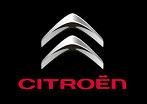
In Mar. 1919 Citroen (Citroën), founded by French Jewish armaments maker Andre-Gustave Citroen (André-Gustave Citroën) (1878-1935) (citroen is Dutch for lemon) announces the Citroen 10HP Type A automobile (12.5K francs), producing 24,093 by Dec. 1921 when it is discontinued, introducing the first mass-production techniques outside the U.S.; by 1923 it becomes Europe's largest car manufacturer and 4th largest in the world, going on to become known for innovative engineering, with the slogan "Creative Technology"; in 1924 it produces Europe's first all-steel-body car, the B-10; in 1934 it produces the Traction Avant, the world's first production front-wheel drive car, with a monocoque-type body; In 1954 it produces the world's first hydropneumatic self-levelling suspension system; in 1955 it produces the Citroen DS, the first Euro production car with disc brakes, featuring futuristic body design; in 1967 it introduces swiveling headlights;

On May 31, 1919 the 1919 (7th) Indianapolis 500 is won by Howard Samuel "Howdy" Wilcox (1889-1923) at an avg. speed of 88.05 mph; Jules Goux comes in 3rd, and Ralph De Palma comes in 6th.

On May 31, 1920 the 1920 (8th) Indianapolis 500 is won by Swiss-born Gaston Chevrolet (1892-1920) after leader Ralph De Palma's car stalls on lap 187, allowing him to gain the lead, and he runs out of fuel on lap 197 but coasts to the pits and refuels, becoming the first driver in Indy history to win without making a tire change, ending the dominance of Euro-built cars in his Frontenac; too bad, he is killed in an automobile crash in Beverly Hills on Nov. 25.



In 1920 Mazda (named after Persian god Ahura Mazda) (called Matsuda in Japan) (originally Toyo Cork Kogyo Co. Ltd.) is founded in Hiroshima, Japan by Jujiro Matsuda (1875-1962) to produce machine tools; in 1927 it becomes Toyo Kogyo Co.; in 1931 they introduce their first vehicle, the Mazda-Go (Mazdago) 3-wheeled motorcycle-truck (autorickshaw), going on to develop the Wankel rotary engine, producing the Cosmo Sport in 1967-95; in 1984 they officially adopt the Mazda name.

On May 30, 1921 the 1921 (9th) Indianapolis 500 is won by 1-eyed Thomas "Tommy" Milton (1893-1962) in a straight-eight Frontenac built by Louis Chevrolet after Ralph De Palma leads for 109 laps and breaks a connecting road, drops out on lap 112, then retires after leading a record 612 laps in the Indy 500 (until 1987).




In 1921 Frederick Samuel Duesenberg (1876-1932) and August Samuel Duesenberg (1879-1955) introduce the first production straight 8-cylinder engine and hydraulic front brakes on their new Duesenberg Model A (Straight Eight) (1921-6), made in Indianapolis, Ind., which next year becomes the first U.S.-made car to win the Grand Prix at Le Mans, France, beating the entire field by 14 min.; on Oct. 26, 1926 Chicago financier Errett Lobban "E.L." Cord (1894-1974) buys them out, allowing the Duesenberg brothers to stay on, and in 1928-37 they produce the Duesenberg Model J, with supercharger option in 1932, becoming the most luxurious and best-engineered automobile of the time, which is later prized by collectors; Cord takes the co. over completely in 1933, makes the cover of the Apr. 23, 1934 Time mag., and buys the Stinson Aircraft Corp. and Century Airlines before facing bankruptcy and diddling with the stock and being forced by the SEC to sell his shares in 1936, causing production to end in 1937.

In 1921 Durant Motors is founded by ex-GM dir. William Crapo "Billy" Durant (1861-1947); in 1922 it acquires Locomobile; in 1931 after the stock market crash doesn't help it any, it goes bankrupt, and Durant dies broke slinging hamburgers and managing a bowling alley.


On May 18, 1922 Irish driver Kenelm Edward Lee Guinness (1887-1937) (member of the Guinness brewing family) sets a new land speed record of 136.05 mph in his Sunbeam 350HP with V12 Manitou engine, becoming the last to be set on a racetrack rather than a beach or salt flat. On May 30, 1922 the 1922 (10th) Indianapolis 500 is won by James Anthony "Jimmy" Murphy (1894-1924), who becomes the first to win from the pole position; Ralph De Palma comes in 4th.
In 1922 Mercedes-Daimler cars become #1 in auto racing.





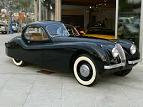
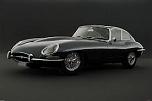
In 1922 Jaguar Cars (originally the Swallow Sidecar Co.) is founded in Whitley, Coventry, England by "Mr. Jaguar" Sir William Lyons (1901-85) and William Walmsley (1892-1961) to make motorcycle sidecars, founding SS Cars Ltd. in 1935, and first using the Jaguar name in 1935, going on to produce a series of ultra-cool sports cars incl. the XK 120 (1949), XK 140, XK 150, and E Type (1961); in 1945 after WWII causes their initials SS to become un-PC, they change their name to Jaguar Cars Ltd.; in 1966 they are acquired by British Motor Corp., and in 1968 merge with Leyland Motor Corp., which is nationalized in 1975-84, then in 1990 are acquired by Ford.
On May 30, 1923 the 1923 (11th) Indianapolis 500 is won by Tommy Milton (2nd time), who becomes the first repeat winner after he is relieved by 1919 winner Howdy Wilcox on laps 103-51 to have his hands bandaged due to blisters; on lap 22 Tom Alley crashes on the backstretch, going through the wall and killing 38-y.-o. spectator Bert Shoup.
In 1923 the 24 Hours of Le Mans is founded in Le Mans, France, going on to become the world's active sports car endurance race, becoming known as "the Grnad Prix of Endurance and Efficiency"; one leg of the Triple Crown of Motorsport incl. the Indy 500 and the Monaco Grand Prix.


On May 30, 1924 the 1924 (12th) Indianapolis 500 is won by Joseph "Joe" Boyer (1890-1924) after he is relieved on lap 109, and on lap 111 relieves Lora Lawrence Corum (1899-1949), leading for the last 24 laps, becoming the first Indy 500 in which the relief driver finishes the race, causing them to be declared co-winners; Boyer's car is taken over by Ernie Ansterberg, Corum, and Thane Houser, who crashes it on turn 1 after 176 laps; Jimmy Murphy finishes 3rd. On July 6, 1924 1914 Indianapolis 500 winner Rene Thomas sets a new world land speed record of 143.31 mph in his Delage.
In 1924 Henry Ford startles the world by offering the Model T for only $290 (same price that the Asians offer kids' motorized Pocket Rockets for in the year 2004?); Ford Motor Co. produces its 10 millionth car; there is a widespread movement to run Ford for pres.

In 1924 the MG Car Co. Ltd. (Morris Garages) in Abingdon, Oxfordshire, England is founded by Cecil Kimber (1888-1945) to make 2-seater sports cars, becoming a separate div. of Morris Motors; in 1952 it merges with Austin.

On May 30, 1925 the 1925 (13th) Indianapolis 500 is won by Peter DePaolo (1898-1980) (nephew of Ralph De Palma), who becomes the first to avg. over 100 mph (101.127) and complete the race in under five hours; Norman Batten relieves him for laps 106-27 while his hands are bandaged. In 1934 DePaolo races on the Avus Course near Berlin in the rain, and his engine throws two connecting rods that narrowly miss Adolf Hitler, who is sitting in a box seat; after a crash in Spain puts him in a coma for 11 days, he retires.


On June 6, 1925 after launching the 6-cylinder Chrysler automobile last year, which features the first mass-produced 4-wheel hydraulic brakes, along with carburetor air filter, high compression engine, full pressure lubrication and oil filter, rubber engine mounts, and a wheel with a ridged rim to keep punctured tires from flying off, Walter Percy Chrysler (1875-1940) (should be Walter Piston?) founds Chrysler Corp. out of the Maxwell Motor Co., going on to become #2 in the U.S. in 1936-49; in 1928 it acquires the Dodge Brothers Co., and spins off the low-price Plymouth brand and medium-price DeSoto brand (ends 1961); in 1955 it produces the first transistor car radio; in 1957 it produces the first electronic fuel injection; in 1987 it acquires Am. Motors Corp.; in 1998 it merges with Daimler-Benz; in 2009 it files for bankruptcy, and is acquired by Fiat. In 1925 GM's earnings surpass Ford's; Ford opens plants in Yokohama and Germany. In 1925 enclosed cars outsell open cars for the first time and create a big demand for windows; front and rear bumpers become standard equipment on Am. cars.

On May 31, 1926 the 1926 (14th) Indianapolis 500 is won by rookie Frank Lockhart (1903-28) in his 380 hp 8-cylinder 91 cu. in. (1491cc) supercharged Miller after a 1-hour rain delay on lap 72, and called at 160 laps (400 mi.), becoming the first rain-shortened Indy 500; Lockhart becomes the 4th rookie to win; Louis Chrevolet drives the Chrysler pace car.

On July 11, 1926 the first-ever German Grand Prix is held at AVUS track in Berlin in front of 500K spectators, and "Rainmaster" Otto Wilhelm Rudolf "Karratsch" Carraciola (1901-59) of Germany is the winner and crowd choice.

In 1926 the Pontiac brand is introduced by GM as a companion to Oakland, going on to supplant it by 1933 and become a companion make for Chevrolet; it is discontinued in 2010.

On Apr. 14, 1927 Volvo (Lat. "I roll") is founded in Hinsingen, Gothenburg, Sweden, building 280 Volvo OV4 "Jakob" cars this year; in Jan. 1928 the Series 1 truck line debuts; in 2000 Ford Motor Co. acquires its car div.; the original Volvo trademark was registered in May 1911 by Swedish ball bearing manufacturer AB SKF, and established as a subsidiary in 1915.

On May 30, 1927 the 1927 (15th) Indianapolis 500 sees reigning champ Frank Lockhart set an opening lap-leader record (until 1991) and lead until his intercooler-equipped car breaks a connecting rod in lap 107, after which rookie George Souders (1900-76) wins by eight laps, largest margin since 1913, becoming the first driver to drive the entire race solo sans mechanic or relief driver.

In 1927 the Bentley Boys, a group of wealthy young British socialites, incl. Joel Woolf "Babe" Barnato (1895-1948), Sir Henry Ralph Stanley "Tim" Birkin, 3rd Baronet (1896-1933), George Pearson Glen Kidston (1899-1931), and Bernard Rubin (1896-1936) who use the SE corner of Grosvenor Square in Mayfair, London for their HQ and love green Bentley motor cars and daylong parties win their first of five straight 24 Hours of Le Mans races (last 1931).

On May 30, 1928 the 1928 (16th) Indianapolis 500, the first presided over by new Speedway pres. Eddie Rickenbacker is won by rookie Louis Meyer (1904-95), with an avg. speed of 99.482 mph, winning $28,250.


On Apr. 14, 1929 the first Monaco Grand Prix, held on a narrow course in the streets of Monaco is won by William Charles Frederick Grover-Williams (1903-45) of France in a Bugatti in 2:15.0; 16 drivers enter; Rudolf Caracciola comes in 3rd; the purse is 100K French francs; the race is organized by cigarette magnate Antony (Anthoy) Noghes (Noghès) (1890-1978), who first suggests the use of a checkered flag to end races; in 1979 the last (Gazometer) turn of the Monaco circuit is renamed the Virage Antony Noghes.; after working for the Resistance in WWII, Grover-Williams is captured and executed by the Nazis.

On May 30, 1929 the 1929 (17th) Indianapolis 500 is won by Charles Raymond "Ray" Keech (1900-29) after leader Louis Meyer's car stalls in the pits due to low oil pressure on lap 157; Maude A. Yagle becomes the first female winning owner; on June 15 Keech, who set the land speed record of 207.55 mph on Apr. 22, 1928 in the 3-engine Spirit of Elkdom (broken on Mar. 11, 1929 by Henry Segrave) is killed in an accident at Altoona Speedway in Penn.


In 1929 6'1-1/2" Enzo Anselmo Ferrari (1898-1988) founds Ferrari S.p.A. (originally Scuderia Ferrari) in Modena, Italy to manufacture race cars, expanding into street-legal cars in 1947 with the 125S; in 1969 Fiat acquires 50% of it, growing to 85% in 2008.

On May 30, 1930 the 1930 (18th) Indianapolis 500 is won by pole position winner Richard William "Billy" Arnold (1905-76), who leads the last 198 laps, setting a record (until ?), becoming the first to complete the race in under five hours without a relief driver.

On May 30, 1931 the 1931 (19th) Indianapolis 500 is won by Indianapolis native Louis F. Schneider (1901-42), who leads the last 34 laps accompanied by riding mechanic Jigger Johnson after Billy Arnold leads in laps 7-62 until his rear axle breaks, spins in turn 4, is hit by another car, and goes over the outside wall, with one of his wheels bouncing across Georgetown Rd. and killing 12-y.-o. Wilbur C. Brink, who is playing in his yard.




In 1931 Ferdinand Porsche (1857-1952) founds Porsche GmbH in Stuggart, Germany. In 1934 after urging by the German DAF (Worker's Front) of Robert Ley, Adolf Hitler and Ferdinand Porsche begin work on the Volkswagen (Ger. "people's car") AKA the Beetle; when the German auto industry can't sell it for 1K marks or less, the DAF takes it over completely, and gets Porsche to build a factory in Fallersleben, paid for by appropriating DAF member dues; the first models appear in Feb. 1939, but the outbreak of WWII causes all 340K of the paid customers to get stiffed. In 1939 the Porsche 64 is introduced, utilizing components from the Beetle, with a 100 hp engine and bathtub shape.

On May 30, 1932 the 1932 (20th) Indianapolis 500 is won by Frederick William "Fred" Frame (1894-1962) (who came in 2nd last year) and riding mechanic Jerry Houck with a record avg. speed of 104.144 mph; starter Billy Arnold takes the lead from pole-sitter Lou Moore on lap 2, then rolls over on lap 60; the first race with 10-lap (25 mi.) qualifying runs, replacing 4-lap runs.
On May 30, 1933 the 1933 (21st) Indianapolis 500 is won by Louis Meyer (2nd win) with an avg. speed of 104.162 mph after Bill Cummings achieves the pole position with a speed of 118.521 mph; the deadliest Indy 500 (until ?), with five drivers killed, becoming the 5th straight year with a fatality.

In 1933 English driver Sir Malcolm Campbell (1885-1948) (knighted 1931) sets an automobile speed record of 272.46 mph.

In 1933 Adolf Hitler offers 500K marks to build the fastest racecar in the world, resulting in the Auto Union D-Type racecar, with a sleek streamlined design, AKA "the Hitler Porsche", which later becomes the Audi brand.
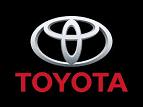
In 1933 Toyota is founded in Tokyo, Japan as a div. of Toyoda Automatic Loom Works, producing the A1 and G1 passenger cars in 1935; in 2008 its sales exceed GM's, making it #1 in the world.

On May 30, 1934 the 1934 (22nd) Indianapolis 500 is won by Indianapolis native William "Wild Bill" Cummings (1906-39) with an avg. speed of 104.863 mph, beating Mauri Rose by 100 yards (27.725), becoming the closest race so far; Rose files a protest that Cummings illegally gained ground during a slow-down period following a crash; Louis Moore comes in 3rd; only 12 of 33 cars finish; on Feb. 8, 1939 Cummings dies in a 1-car passenger car accident on State Road 29.

On May 30, 1935 the 1935 (23rd) Indianapolis 500 is won by Cavino Michele "Kelly" Petillo (1903-70), becoming the first winning car powered by an Offenhauser engine; despite becoming the first Indy 500 requiring crash helmets with green and yellow lights installed around the track, three drivers are killed on May 21, and Clay Weatherly is killed on lap 9, causing the Speedway to launch a program to test rookie drivers.

On May 30, 1936 the 1936 (24th) Indianapolis 500 is won by Louis Meyer, who becomes the first 3-time winner, celebrating in victory lane with a bottle of buttermilk, starting a tradition of serving milk, and being awarded the first Borg-Warner Trophy, which Meyer claims "is like winning an Olympic medal"; after pace car driver Tommy Milton suggests it, the Packard pace car is awarded to Meyer, starting another tradition.

On May 31, 1937 the 1937 (25th) Indianapolis 500 is won by Warren Wilbur Shaw (1902-54) in 92F weather with his oil leaking from the crankcase and fighting off Ralph Hepburn, winning by 2.16 sec., the closest finish until 1982.


In 1937 Honda Motor Co. (originally Tokai Seiki) is founded by Soichiro Honda (1906-91) to make piston rings, going into the motorcycle business in 1946, incorporating in 1949, and becoming the world's largest motorcycle manufacturer in 1959, the first Japanese manufacturer to produce a luxury car brand (Acura) in 1986, and growing by 2001 to 2nd largest automobile manufacturer in Japan, and 8th largest in the world.

On May 30, 1938 the 1938 (26th) Indianapolis 500 is won by Floyd Marion Roberts (100-39) with a record speed of 117.2mph, leading for 92 laps; on lap 45 the #42 car driven by Emil Andres hits the wall in turn 2 and flips, causing its right front wheel to fly 100 ft., killing 33-y.-o. spectator Emil Andres.
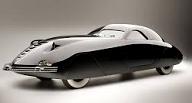
In 1938 the Phantom Corsair prototype 6-passenger 2-door sedan is designed by Rust Heinz of the H.J. Heinz family, featuring faired-in fenders and low profiles; it never goes into production - the real Batmobile?
On May 30, 1939 the 1939 (27th) Indianapolis 500 is won by Wilbur Shaw (2nd time); on lap 109 reigning champ Floyd Roberts is killed when his car goes through the wooden outer wall at 100 mph on the backstretch; Louis Meyer also crashes at over 100 mph, but is unharmed, and never drives in an Indy 500 again; Shaw becomes pres. of the Indianapolis Motor Speedway in 1945-54.
On May 30, 1940 the 1940 (28th) Indianapolis 500 is won by Wilbur Shaw (2nd win, and 3rd in 4 years) in the same Maserati 8CTF as last year, becoming the 1st to win two in a row, and 2nd to win 3x.

On May 30, 1941 the 1941 (29th) Indianapolis 500 is won by Floyd Eldon Davis (1909-77) and Mauri Rose (1906-81), who takes over for him on lap 72 while in 12th place, with Davis uttering the soundbyte: "I was ready to go into the lead when they called me in"; he is so disgusted that he never drives in another Indy 500?
On May 30, 1942 the 1945 (30th) Indianapolis 500 is cancelled because of WWI; the race isn't held again until 1946.



In 1945 Allard Motor Co. Ltd. in SW london, England is founded by Sydney Herbert Allard (1910-66), putting large American V8 engines in a light British chassis to give them a high power-to-weight ratio for use in trials events on difficult terrain, going on to produce 1.9K cars by 1958, when it goes bankrupt; in 1949-54 the cycle-fendered Allard J2 and J2-X are produced, with a lightwight aluminum body with independent front suspension, and Ford flathead V8; one comes in 3rd at the 1950 Le Mans, and another wins the 1952 Monte Carlo Rally, driven by Allard himself.



In 1945 Saab Automobile AB (Svenska Aeroplan Aktiebolaget) (Swedish Airplane Corp.) of Linkoping, Sweden (founded in 1937 to build aircraft for the Swedish air force) opens an automobile div., producing the 2-cylinder Saab 92 in Dec. 1949, and selling 20K cards by 1955, when the 3-cylinder Saab 93 replaces it, becoming the first with the trademark trapezoidal radiator grill; in 1955 the Saab Sonett open-top 2-seater roadster debuts; in 1989 GM gains a 50% share, growing to 100% in 2000; in 2010 Spyker acquires it; on Dec. 19, 2001 Saab files for bankruptcy; on June 13, 2012 it is acquired by the Chinese consortium Nat. Electric Vehicle Sweden (NEVS).


In 1945 British Racing Motors (BRM) is founded in Bourne, Lincolnshire, England as a Formula One racing team, competing in 197 Grand Prix races in 1950-77, winning 17, and winning the constructors' title in 1962; its driver Norman Graham Hill (1929-75) becomes Formula One world champion in 1962 and 1968.

On May 30, 1946 the 1946 (30th) Indianapolis 500, the first presided over by new track owner Tony Hulman is won by English-born Canadian driver George Robson (1909-46) (pr. like rob son), who utters the soundbyte: "I just kept steering to the left"; too bad, on Sept. 2 he dies in an accident at Lakewood Speedway in Atlanta, Ga.
In 1946 the Nat. Stock Car Racing Assoc. (NSCRA) is founded in Atlanta, Ga., operating in the SE U.S. in competition with NASCAR etc., becoming #2 we try harder until going defunct in 1951.

On May 30, 1947 the 1947 (31st) Indianapolis 500 is won by Mauri Rose (1906-81) (2nd win), with teammate Bill Holland coming in 2nd after he mistakenly believes he's a lap ahead and waves as he passes; on lap 40 Holland's car spins, causing William "Shorty" Cantlon (1904-47) to swerve into the outside retaining wall, killing him; his car is left resting against the wall for the rest of the race.


In 1947 South Korean automobile maker Hyundai (Korean for modern) is founded by Chung Ju-yung (1915-2001); in 1997 the conglomerate is broken up into Hyundai Motor Group et al.
In 1947 .526 mi. (.847km) paperclip Martinsville Speedway in Ridgeway, Va. is built by H. Clay Earles, becoming the only race track that has been on the NASCAR circuit from its beginning in 1948 to survive to modern times, becoming one of the first paved oval tracks in the NASCAR circuit, and the shortest track in the NASCAR Sprint Cup Series; it has asphalt surfaces on the straightaways, and concrete surfaces on the turns.


On Feb. 21, 1948 after holding talks on Dec. 14, 1947 at the Ebony Bar of the Streamline Hotel, NASCAR (Nat. Assoc. for Stock Car Auto Racing) is founded in Daytona Beach, Fla. by William Henry Getty "Big Bill" France Sr. (1909-92); a normal race has 43 starter cars?
On May 31, 1948 the 1948 (32nd) Indianapolis 500 is won by Mauri Rose (first 3-time winner, and 2nd to win in consecutive years), with Bill Holland coming in 2nd for the 2nd year in a row.

On May 30, 1949 the 1949 (33rd) Indianapolis 500 is won by Bill Holland (1907-84) (who came in 2nd in 1947, 1948, and again in 1950) after he reverses the con of the 1947 race when Mauri Rose ignores owner Lou Moore's "EZ" signs and pushes his car until it breaks, causing Moore to fire him. On Nov. 14, 1951 he is suspended from Indy racing for one year for competing in a 3-lap Lion's Club NASCAR charity race in Opa-locka Fla.

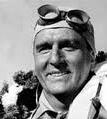
On May 30, 1950 the 1950 (34th) Indianapolis 500 is won by Johnnie Woodrow Parsons (1918-84) (born on the 4th of July) after it is stopped at 138 laps due to rain; no European drivers enter this year or next, although in 1950-60 Indy 500 races are part of the Formula One Grand Prix championships; Parsons' first name is misspelled Johnny (his son's name) on the trophy; a false rumor circulates that Parsons had a crack in his engine block and wouldn't have completed 200 laps. The first Formula One World Drivers Title goes to Emilio Giuseppe "Nino" Farina (1906-66) of Team Alfa Romeo (known for his straight-arm driving style), who clinches it in race 7 of 7 by 3 points.
In 1950 Nash introduces production seat belts in its Statesman and Ambassador models, and reintroduces the Rambler (AKA the Kenosha Cadillac) brand until it is bought out in 1954 by Am. Motors Corp. (AMC).

On May 30, 1951 the 1951 (35th) Indianapolis 500 is won by Lee Wallard (1910-63) in his 99 Belanger Special despite bad brakes, damaged exhaust pipe, and broken shock absorber mounting, losing 15 lbs. from the fire retardant outfit sans undershirt; only eight cars finish the race; a week later Wallard gets in a fiery crash in Reading, Penn., ending his career.

In mid-Apr. 1952 the British Motor Corp. (BMC) Ltd. in Longbridge (near Birmingham), England is formed from the merger of Morris Motors and the Austin Motor Co., controlling 39% of British car production incl. the Austin, Morris, MG, Austin-Healey, Riley, and Wolseley brands.

On May 30, 1952 the 1952 (36th) Indianapolis 500 is won by Troy Ruttman (1930-97) after leader Bill Vukovich breaks a steering linkage with 9 laps to go, becoming the youngest winner (22 years 80 days) (until ?), and last dirt track car to win (until ?); he also becomes the youngest winner of a world drivers' championship race (until 2003).

In 1952 Lotus Cars is founded in Britain on the former site of WWII RAF Hethel airfield in Norfolk, going on to found the Formula 1 Team Lotus for its Espirit, Elan, Europa, and Elise sports cars, known for light weight and fine handling characteristics.
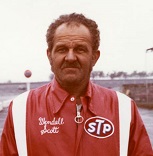
In 1953 Danville, Va.-born Wendell Oliver Scott (1921-90) becomes the first African-Am. driver to compete in NASCAR races; after debuting in the Grand Nat. Series in Spartanburg, S.C. on Mar. 4, 1961, he wins his first race on Dec. 1, 1963 at Speedway Park in Jacksonville, Fla., becoming the first African-Am. winner.

On May 30, 1953 the 1953 (37th) Indianapolis 500 (the Hottest 500), run at an ambient temp in the high 90s and track temp of 130+ F is won by William "Bill" "Vuky" "Vuke" "the Mad Russian" Vukovich (1918-55).
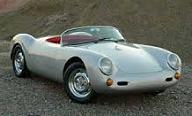
In 1953 the Porsche Spyder debuts at the Paris Auto Show, becoming the favorite of actor James Dean.
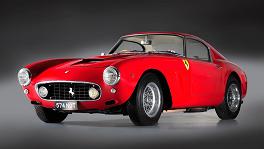
In 1953 the Ferrari 250 sports car is introduced (until 1964), available in LWB (long wheelbase) or SWB (short wheelbase) versions, going on to be replaced by the Ferrari 275 and Ferrari 330; in 2015 a Ferrari 250 GT SWB is sold at auction for $10M.



On May 1, 1954 Am. Motors Corp. (AMC) is formed by the merger of Nash-Kelvinator Corp. and Hudson Motor Car Co., becoming the largest corporate merger in U.S. history (until ?), phasing out the Nash and Hudson brands by the end of 1957, with the Rambler brand becoming the 3rd most popular U.S. brand after Ford and Chevrolet; the architect of the merger is Nash-Kelvinator CEO (since 1937) George Walter Mason (1891-1954); in 1955 George Wilcken Romney (1907-95) becomes CEO (until 1962), squelching rumors that Studebaker-Packard Corp. would join to make it #2 behind GM; after his success with Rambler, Romney is touted for Pres. Eisenhower's job, but only makes it to Repub. gov. of Mich. (1963-9) because he's a Mormon?; AMC goes defunct in 1988.
On May 31, 1954 the 1954 (38th) Indianapolis 500 is won by Bill Vukovich (2nd win).
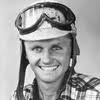



On May 30, 1955 the 1955 (39th) Indianapolis 500 is won by Robert Charles "Bob" Sweikert (1926-56) after Bill Vukovich (b. 1918) is killed in a 4-car crash outside the 2nd turn while holding a 17 sec. lead on lap 57, becoming the 2nd defending Indy 500 champ to die during the race after Floyd Roberts in 1939, and the first to be killed while leading; a year later Sweikert is killed in a crash at Salem Speedway in Ind.; after the 1955 Le Mans disaster, the AAA drops out of auto racing, and the United States Auto Club (USAC) is founded to sanction the U.S. Nat. Championship, sanctioning the Indianapolis 500 in 1956-97. On June 11 the 24-hour 1955 Le Mans Grand Prix becomes a disaster when a Mercedez-Benz 300 SLR racing car driven by Pierre Levegh (Pierre Eugene Alfred Bouillin) (b. 1905) (pr. le-VECK) hurtles into the grandstand, killing 83 spectators and injuring 120+, causing many Grand Prix races to be cancelled or banned in Europe, becoming the worst accident in motorsport history (until ?) - have trouble getting to work after a car accident?

On May 30, 1956 the 1956 (40th) Indianapolis 500 (AKA Cagle's Miracle) is the first to be governed by the United States Automobile Club (USAC) after the AAA withdraws in Aug.; the track is paved with asphalt, with only 600 yards of the original brick remaining; after torrential rains, Speedway supt. Clarence Cagle removes hundreds of thousands of gal. of water in a 48-hour nonstop effort; the winner is George Francis "Pat" Flaherty Jr. (1926-2002).

On May 30, 1957 the 1957 (41st) Indianapolis 500 is won by Sam Hanks (1914-94) on his 13th try, causing him to retire immediately; he becomes the first driver to win $100K in a single race, with a $103,844 purse.


On May 30, 1958 the 1958 (42nd) Indianapolis 500 starts with a massive 1st lap 15-car pileup that kills fan favorite Pat O'Connor (b. 1928); the debut of rookie A.J. Foyt, who spins in an oil slick on lap 148 and drops out; the winner is James Ernest "Jimmy" Bryan (1926-60), who is later killed in a race at Langhorne Speedway in Penn.




In 1958 English driver Stirling Craufurd Moss (1929-) wins the first Formula One race in a rear-engine car, causing all F1 cars to feature this design within two years; too bad, he defends rival Ferrari driver John Michael "Mike" Hawthorn (1929-59) at the Portuguese Grand Prix for reversing on the track to jump-start his car, gaining him 6 points that helps him beat Moss for the Formula One World Title (first British winner), causing Moss to become known as "the greatest driver never to win the world championship"; after rival Ferrari driver Luigi Musso (1924-58) is killed at the 1958 French Grand Prix on July 6, and his Ferrari-driving teammate Peter John Collins (1931-58) is killed in the German Grand Prix on Aug. 3, Hawthorn freaks at the thought of all them rolling coffin Ferraris and resigns after winning the world title, then is killed in a road accident 6 mo. later on Jan. 22, 1959.
In 1958 Nissan Motor Corp. of Japan introduces the Datsun, which reaches #6 in U.S. imported car sales in 1966, and #3 in 1970.





On Feb. 22, 1959 Lee Arnold Petty (1914-2000) beats Johnny Beauchamp (1923-81) by 2 ft. in the first 1959 (1st) Daytona 500 auto race in Daytona Beach, Fla., whose grand marshal starts it with "Gentlemen, start your engines"; Beauchamp is declared the winner until photos are viewed three days later; the winner's check is $19,050; the new $3M 2.5 mi. Daytona Internat. Speedway is designed by NASCAR founder William France Sr., featuring his 5-turn tri-oval (triangle-oval) design with banked roadways to permit higher speeds and give fans better views. On May 30, 1959 the 1959 (43rd) Indianapolis 500 is won by Rodger Ward (1921-2004). On July 4 the first Firecracker 250 is held in Daytona Beach, Fla. in front of 12,900 spectators; the winner is Edward Glenn "Fireball" Roberts Jr. (1929-64), who leads 84 of 100 laps, and wins again in 1962; in 1963 it is expanded to 160 laps, becoming known as the Firecracker 400, and is again won by Fireball Roberts, who dies on July 2, 1964 after a fiery crash at the World 600 in Charlotte, N.C. on May 24.


On Feb. 14, 1960 the 1960 (2nd) Daytona 500 is won by Robert Glenn "Junior" Johnson Jr. (1931-) (inventor of the drafting technique?) in a 1959 Chevrolet, becoming the first to be televised (by CBS-TV, anchorman Bud Palmer), and the slowest race in Daytona 500 history (124.74 mph avg.). On May 30 the 1960 (44th) Indianapolis 500 is won by Richard "Jim" Rathmann (1928-).
On July 30, 1960 $600K .533 mi. Bristol Motor Speedway AKA "Thunder Valley", "World's Fastest Half-Mile", "The Last Great Colosseum" in Bristol, Tenn. hosts its first NASCAR race, becoming known for its steep 30 deg. banking, all-concrete surface, and stadium-like seating for 160K, becoming one of NASCAR's loudest tracks.
On July 31, 1960 $1.8M 1.54 mi. Atlanta Motor Speedway (originally Atlanta Internat. Raceway) in Hampton, Ga. opens to host NASCAR races.
In 1960 $1.25M 1.5 mi. Charlotte Motor Speedway (originally Lowe's Motor Speedway) in Concord, N.C. opens, going on to host the annual Coca-Cola 600 (longest NASCAR race) on Memorial Day weekend.



On Feb. 26, 1961 the 1961 (3rd) Daytona 500 is won by Marvin Panch (1926-) in his 1960 Pontiac at an avg. speed of 149.601 mph. On May 30 the 1961 (45th) Indianapolis 500 is won by Anthony Joseph "A.J." Foyt Jr. (1935-). On Sept. 10 German driver Count Wolfgang Alexander Albert Eduard Maximilian Berghe von Trips (b. 1928) collides with Jim Clark's Lotus and crashes his Ferrari into a stand at the F1 Italian Grand Prix in Monza, Italy, killing 15 spectators plus himself and ruining Germany's chance to get its first Formula One world title, for which he only needed to come in 3rd.
On Feb. 18, 1962 the 1962 (4th) Daytona 500 is won by Fireball Roberts in a 1962 Pontiac (#22) in 3 hours 10 min., leading 144 of 200 laps without a single caution flag. On May 30 the 1962 (46th) Indianapolis 500 is won by Rodger Ward (2nd win); Parnelli Jones breaks the 150 mph barrier in qualifying.
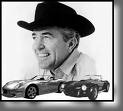
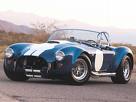
In 1962 British automaker AC Cars begins manufacturing the AC Cobra with a straight-6 engine; Am. automotive designer Carroll Hall Shelby (1923-2012) uses it to build the first 2-seat Shelby 427 Cobra, with a 500 hp small block Ford V-8 engine in order to take on the Chevy Corvette, which it does quite well since it weighs 500 lb. less; the last AC chassis is imported in 1967; a 1966 Shelby Cobra 427 Super Snake sells for $5.5M in 2007.


On Feb. 24, 1963 the 1963 (5th) Daytona 500 is won by DeWayne Louis "Tiny" Lund (1929-75), who subs for injured Marvin Panch, and coasts home after running out of gas; the first time that ABC-TV's Wide World of Sports covers the race. On May 30 the 1963 (47th) Indianapolis 500 is won by Rufus Parnell "Parnelli" Jones (1933-), who almost wins the 1967 Indy 500 in a turbine car.




In 1963 Italian manufacturing tycoon Ferruccio Elio Arturo Lamborghini (1916-93) founds Automobili Lamborghini with the objective of competing with Ferrari; in 1964 their Ferrari-beating Lamborghini 350GT begins production, followed in 1966-73 by their Miura sports coup featuring rear mid-engine and rear-wheel drive, starting a trend for hi-performance 2-seater mid-engined sports cars, becoming the fastest production road car available.

In fall 1963 the luxury 2-door Porsche 911 sports coupe is introduced, featuring an air-cooled rear engine with independent rear suspension.

On Feb. 23, 1964 the 1964 (6th) Daytona 500 is won by Richard Lee Petty (1937-) (son of Lee Petty) (#43) in a 1964 Plymouth; this year Petty wins 27 NASCAR races in his new 750 hp Chrysler 426 Hemi, rocking the auto racing world. On May 30 the 1964 (48th) Indianapolis 500 is won by A.J. Foyt (2nd win), becoming the last Indy 500 won by a front-engine roadster; in lap 2 a 7-car accident kills Eddie Sachs and Dave MacDonald.


On Mar. 9, 1964 the first Ford Mustang rolls off the Ford assembly line; on Apr. 17 it is unveiled at the New York World's Fair; 680K are sold the first year with a base price of $2,368, becoming an all-time favorite of car buffs; Pontiac counters with the GTO (a V-8 engine crammed into a Pontiac Tempest, AKA the Goat, designed by John Z. DeLorean), launching the U.S Muscle Car Craze.

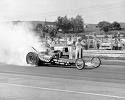

In June 1964 the British Drag Racing Assoc. is founded by Allard Motors Co. founder ("the Father of British Drag Racing") Sydney Herbert Allard (1910-66), opening the first permanent drag racing strip in Britain in Santa Pod (near Bedford). In Aug. Donald Glenn "Don" "Big Daddy" Garlits (1932-), "the Father of Drag Racing" becomes the first drag racer to achieve 200 mph (201.34) in Swamp Rat VI in Great Meadows, N.J.; Arthur Eugene "Art" Arfons (1926-2007) sets the land speed record 3x this year and next in his Green Monster jet-powered car.

In 1964-7 the Sunbeam Tiger is produced as a high-performance V8 version of the Sunbeam Alpine roadster, designed by Carroll Shelby.

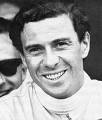
On Feb. 14, 1965 the 1965 (7th) Daytona 500 is won by Frederick "Fast/Fearless Freddy" "Golden Boy" Lorenzen (1934-) in 2 hours 23 min., beating 2nd place Darel Dieringer by a full lap. On May 31 the 1965 (49th) Indianapolis 500 is won by James "Jim" "Jimmy" Clark Jr. (1936-68) of Scotland, launching the IndyCar Series on ABC-TV.

On Feb. 26, 1966 the 1966 (8th) Daytona 500 is won by #43 Richard Petty (2nd time) in a 1966 Plymouth in a 198-lap race shortened by rain. On May 30 the 1966 (50th) Indianapolis 500 is won by Norman Graham Hill (1929-75) of England, who won the Monaco Grand Prix in 1963-5, and again in 1968-9, and wins the Le Mans in 1972, becoming the first to win the Triple Crown of Motorsport (until ?).


On Feb. 26, 1967 the 1967 (9th) Daytona 500 is won by Italian-born Mario Gabriele Andretti (1940-) in a Holman-Moody Ford, becoming his first and only NASCAR Grand National win, and the first winning driver born outside the U.S. (until ?), although he claims Nazareth, Penn. as his "adopted" home town. On May 30-31 the 1967 (51st) Indianapolis 500 is won by Anthony Joseph "A.J." Foyt Jr. (1935-); the first time that turbine cars are allowed to qualify; next year is the last. In 1967 Dan Gurney and A.J. Foyt win the 24 Hours of Le Mans, starting the tradition of spraying champagne on the crowd, starting with team owner Carroll Shelby and Ford Motors CEO Henry Ford II.



On Feb. 25, 1968 the 1968 (10th) Daytona 500 is won by William Caleb "Cale Yarborough (1939-) (#21) in a 1968 Mercury after a record 11 caution flags (60 laps) (until 2005), beating no-relation Lonnie "LeeRoy" Yarbrough (1938-84) by less than 1 sec. On May 30 the 1968 (52nd) Indianapolis 500 is won by Robert William "Bobby" Unser (1934-), brother of Al Unser Sr., becoming the first of three (1975, 1981).

On Feb. 23, 1969 the 1969 (11th) Daytona 500 is won by LeeRoy Yarbrough in a backup Ford after chasing down leader Charlie Glotzbach, becoming the first Daytona 500 won on a last lap pass. On May 30 the 1969 (53rd) Indianapolis 500 is won by Mario Gabriele Andretti (1940-) with a record speed of 156.867 mph, after which a family shutout begins, lasting until ?.
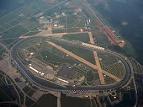
On Sept. 13, 1969 the $4M tri-oval 2.66 mi. Talladega Superspeedway (originally Ala. Internat. Motor Superspeedway) in Talledega, Ala. opens, becoming the fastest NASCAR speedway; the first race sees all the original drivers abandon the track because of tire problems, causing Bill France to hire substitute drivers; the finish sees three cars side-by-side, with Richard Brickhouse declared the winner; on Mar. 24, 1970 Buddy Baker becomes the first NASCAR driver to run a lap over 200 mph (200.447); in 1982 Benny Parsons becomes the first driver to quality at over 200 mph (200.176).


On Feb. 22, 1970 the 1970 (12th) Daytona 500 is won by Peter "Pete" Hamilton (1942-) of Petty Enterprises in a winged Plymouth Superbird. On May 30 the 1970 (54th) Indianapolis 500 is won by Alfred "Big Al" Unser Sr. (1939-).

On Feb. 14, 1971 the 1971 (13th) Daytona 500 is won by Richard Lee Petty (1937-) (3rd time), who goes on to win the first NASCAR Winston Cup Series on Nov. 20, replacing the NASCAR Grand National Series, sponsored by R.J. Reynolds, who hawks cigarettes to the drivers; after NASCAR mandates restrictor plates for all but 358 cu. in. range engines, Dick Brooks becomes the first to race with a small block engine, a 305 cu. in. engine on his 1969 Dodge Daytona at the Daytona 500; the restriction lasts until 1974. On May 29 the 1971 (55th) Indianapolis 500 is won by Al Unser Sr. for the 2nd straight time.
In 1971 Pocono Internat. Raceway AKA the Tricky Triangle in Long Pond, Penn. in the Pocono Mts. opens, owned by Brandon, Nicholas, and Ashley Igdalsky, becoming home to the NASCAR Sprint Cup Race Windows 10 400 (1974) in Aug. and the Axalta "We Paint Winners" 400 (1982) in June.

On Feb. 20, 1972 the 1972 (14th) Daytona 500 is won by A.J. Foyt (#21) in a 1971 Mercury at an avg. of 161.55 mph. On May 27 the 1972 (56th) Indianapolis 500 is won by Mark Neary Donohue Jr. (1937-75).

On Feb. 18, 1973 the 1973 (15th) Daytona 500 is won by Richard Petty (4th time). On May 30 the 1973 (57th) Indianapolis 500 is won by Gordon "Gordy" Johncock (1937-); he wins again in 1982.

On Feb. 17, 1974 the 1974 (16th) Daytona 500 is won by Richard Petty (5th time); due to the energy crisis, the lap officially starts on lap 21, causing it to be called the Daytona 450. On May 26 the 1974 (58th) Indianapolis 500 is won by John Sherman "Johnny" Rutherford III (1938-); during the race an infield of hippies storm the track.

On Feb. 16, 1975 the 1975 (17th) Daytona 500 is won by Benjamin Stewart "Benny" Parsons (1941-2007) after leader David Pearson contacts Cale Yarborough and spins on the backstretch; only 14 of 40 drivers finish the race; a crash on lap four takes out nine cars incl. country singer Marty Robbins, becoming the biggest crash in terms of number of cars in race history (until ?); bobby Allison finishes 2nd, Cale Yarborough 3rd, Dave Pearson 4th, and Richard Petty 7th; no cars in the race have a 1-digit car #. On May 25 the 1975 (59th) Indianapolis 500 is a 2nd win for Bobby Unser (1st in 1968).


In 1975 rich Austrian Formula 1 racer Andreas Nikolaus "Niki" Lauda (1949-) becomes Ferrari's first world champion since John Surtees in 1964; too bad, next Aug. 1 he crashes and suffers serious burns the rain in in lap 2 of the German Grand Prix at the Nurburgring, and is given last rites in the hospital, but returns 6 weeks later, finishing 4th in the Italian Grand Prix, wearing a red baseball cap to hide his disfigurement, and retiring after the 1978 season to start his own airline Lauda Air, then returning in 1982-5 to make more money to finance it, winning his 3rd title in 1984. In 1976 Lauda's rival James Simon Wallis "the Stunt" Hunt (1947-93) of England takes advantage of Lauda's accident to win the world Formula 1 title.

On Feb. 15, 1976 the 1976 (18th) Daytona 500 is won by David Gene Pearson (1934-) (#21) after he collides with leader Richard Petty on the last lap and both start spinning in the grass in the infield in front of the finish line, and Petty's car won't start but his does, becoming the most thrilling Daytona 500 finish until ?. On May 30 the 1976 (60th) Indianapolis 500 is the 2nd win for Johnny Rutherford (1st in 1974) after rain causes it to end at 102 laps (255 mi.), becoming the shortest Indy 500 (until ?).


On Feb. 20, 1977 the 1977 (19th) Daytona 500 is won by Cale Yarborough (2nd win). On May 22 Janet Guthrie (1938-) becomes the first woman to earn a starting spot in the Indianapolis 500 since its inception in 1911; on race day May 29 she completes only 27 laps due to equipment malfunction, and comes in 29th; on May 29 the 1977 (61st) Indianapolis 500 is won by Anthony Joseph "A.J." Foyt Jr. (1935-), becoming his 4th and final V (1961, 1964, 1967).


On Feb. 19, 1978 the 1978 (20th) Daytona 500 is won by Robert Arthur "Bobby" Allison (1937-) #15) after a 67-race winless streak after Richard Petty charges to the lead in his new Dodge Magnum and leads 32 of the first 60 laps at an avg. speed of 180 mph until he cuts the left rear tire and spins out, taking David Pearson and Darrell Waltrip with him, after which heavy rain causes a delay, and after the restart (lap 70) Parsons blows his left rear tire and spins, catching A.J. Foyt, who flips several times in the turn 1 infield, after which Cale Yarborough has engine problems, allowing Allison to take the lead in his boxy 1977 Bud Moore Thunderbird from Buddy Baker, becoming the worst starting position driver to win the race (until 2007); Claude Ballot-Lena (Ballot-Léna) (1936-99) becomes the first NASCAR driver from France. On May 28 the 1978 (62nd) Indianapolis 500 is won by Al Unser Sr., his 3rd (1970, 1971); first win for car owner Jim Hall.



On Feb. 18, 1979 the 1979 (21st) Daytona 500 is won by Richard Lee Petty (1937-) (6th win) after leaders Cale Yarborough and Donnie Allison, along with Donnie's brother Bobby Allison crash and get into "The Fight" during the race's first nat. TV broadcast, bringing nat. publicity to NASCAR, helped by being being broadcast during an East Coast blizzard, boosting the race's popularity, with Motorsports announcer and editor Richard "Dick" Berggren (1942-) (known for wearing a flat cap) uttering the soundbyte: "Nobody knew it then, but that was the race that got everything going. It was the first 'water cooler' race, the first time people had stood around water coolers on Monday and talked about seeing a race on TV the day before. It took a while, years maybe, to realize how important it was." On May 27 the 1979 (63rd) Indianapolis 500 is won by Rick Ravon Mears (1951-) for the first of 4x (1984, 1988, 1991) becoming the 2nd win for car owner Roger Penske; Al and Bobby Unser combine to lead 174 laps until Al drops out and Bobby drops to 5th with mechanical problems; Pres. Gerald Ford becomes the first U.S. pres. to attend the race (until ?). In 1979 the Championship Auto Racing Teams (CART) series is founded by disaffected USAC team owners, covered by the IndyCar Series on NBC-TV, later changing the name Champ Car to Indy Car until the "open wheel split" of 1996, when it splits with the IRL and Indy 500; it goes bankrupt at the end of the 2003 season.


On Feb. 17, 1980 the 1980 (22nd) Daytona 500 is won by Elzie Wylie "Buddy" "Leadfoot" Baker Jr. (1941-) on his record 18th start (longest wait until Dale Earnhardt Sr. in 1998). On May 25 (Sun.) the 1980 (64th) Indianapolis 500 is won by 29.92 sec. by John Sherman "Johnny" Rutherford III (1938-) for a 3rd time (1974, 1976) in owner Jim Hall's radically new Chapparal ground-effect car (his 2nd win); the Chapparals exit auto racing in 1982.
On Feb. 15, 1981 after 49 lead changes, the 1981 (23rd) Daytona 500 is won by Richard Petty (7th win), who beats Bobby Allison by 3.5 sec., with Ricky Rudd, Buddy Baker, and Dale Earnhardt Sr. close behind; new downsized cars make their debut; Petty becomes the first to win in three different decades, and first 7-time winner. On May 24 the 1981 (65th) Indianapolis 500 is won by Bobby Unser, with Mario Andretti coming in 2nd until the officials rule that Unser passed cars illegally on lap 149, causing Andretti to be declared the winner; on Oct. 9 after appeals are heard, Unser is reinstated, after which he retires.
On Feb. 14, 1982 the 1982 (24th) Daytona 500 (first lead NASCAR race of the season) is won by Bobby Allison (#88) in a Gatorade Buick Regal, beating Cale Yarborough by 23 sec. On May 30 1982 the 1982 (66th) Indianapolis 500 sees 1973 winner Gordon Johncock defeat 1979 winner Rick Mears by 0.16 sec., the closest finish so far, after Mears overcomes an 11 sec. disadvantage in the last 10 laps to pull even with one lap remaining.
In 1982 the Internat. Motorsports Hall of Fame adjacent to Talladega Superspeedway in Talladega, Ala. is founded by NASCAR founder Bill France Sr.; due to the opening of the NASCAR Hall of Fame, there is no class of 2010.
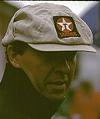
On Feb. 20, 1983 the 1983 (25th) Daytona 500 is won by Cale Yarborough (3rd win) on a last-lap pass. On May 29 the 1983 (67th) Indianapolis 500 is won by Thomas E. "Tom" "the Gas Man" Sneva (1948-) after Al Unser Sr. and his rookie son Al Unser Jr. appeared to be trying to block him in the final 20 laps.
On Feb. 19, 1984 the 1984 (26th) Daytona 500 is won by Cale Yarborough (4th win) on a last-lap pass, averaging 201.848 mph, breaking the 200 mph barrier. On May 27 the 1984 (68th) Indianapolis 500 is won by Rick Mears (2nd win) after Tom Sneva and Mario Andretti drop out of the race in the 2nd half, leaving him alone two laps ahead of the field. On July 4, 1984 "The King" Richard Petty earns the last of his 200 NASCAR wins in the Firecracker 400.


On Feb. 17, 1985 the 1985 (27th) Daytona 500 is won by William Clyde "Awesome Bill" "Million Dollar Bill" Elliott (1955-) (#9) after most of the contenders incl. Cale Yarborough drop out with engine problems. On May 26 the 1985 (69th) Indianapolis 500 (AKA the Spin and Win) is won by Daniel John "Danny" Sullivan III (1950-) after he passes Mario Andretti in lap 120, spins directly in front of him in turn one, then recovers and takes the lead 20 laps later.


On Feb. 16, 1986 after paying tribute to the astronauts of Space Shuttle Challenger, the 1986 (28th) Daytona 500 is won by Geoffrey Eli "Geoff" Bodine (1949-) on fuel mileage after Dale Earnhardt Sr. is forced to pit for gas on lap 197, then blows his engine leaving the pits. On May 31 after being rained out on May 25-26 the 1986 (70th) Indianapolis 500 is won by Robert Woodward "Bobby" Rahal (1953-), who becomes the first to finish in less than 3 hours.

On Feb. 15, 1987 the 1987 (29th) Daytona 500 is won by Bill Elliott (2nd win). On May 24 after 25 crashes during practice and qualifying, the 1987 (71st) Indianapolis 500 sees leader Mario Andretti slow down with 23 laps to go, allowing Alfred "Big Al" Unser Sr. (1939-2021) to win for a big upset.
On May 3, 1987 the NASCAR 1987 Winston 500 at Talladega Internat. Speeedway in Ala. is won by Davey Allison after 10 laps are cut out because of darkness; in lap 22 his father Bobby Allison has a bad crash near the start/finish line, ripping down almost 100 ft. of protective fence, which barely keeps it from crashing into the spectators, causing smaller carburetors followed by restrictor plates to be mandated on cars racing at Talladega and Daytona (until ?).
On Feb. 14, 1988 the 1988 (30th) Daytona 500 is won by Bobby Allison (3rd win) (oldest winner until ?) after a spectacular crash by Richard Petty in the tri-oval on lap 106; Bobby Allison beats his son Davey to the finish line to win. On May 29 the 1988 (72nd) Indianapolis 500 sees Team Penske dominate, with winner Rick Mears winning the pole position, Danny Sullivan the center front row, and Al Unser Sr. the outside front row; Mears becomes the first to break the 220 mph barrier in time trials; the first of six consecutive wins for the Chevy Indy V-8 engine and Ilmor powerplant.


On Feb. 19, 1989 the 1989 (31st) Daytona 500 is won by #17 Darrell Lee Waltrip (1947-); Ken Schrader wins the pole for the 2nd straight year. On May 28 the 1989 (73rd) Indianapolis 500 is won by Emerson Fittipaldi (1946-) of Brazil, who becomes the first foreign winner since 1966 after passing Al Unser Jr. in lap 199 and touching wheels, causing Unser to spin out and crash into the outside wall.
In 1989 Barney Oldfield, A.J. Foyt, Richard Petty, Phil Hill, Bill Muncey, Cannonball Baker, Don Garlits, and Jimmy Doolittle become the first drivers inducted into the Motorsports Hall of Fame of Am. in Novi, Mich.; in 2009 it moves to Detroit, Mich.


On Feb. 18, 1990 the 1990 (32nd) Daytona 500 is won by Derrike Cope (1958-). On May 27 the 1990 (74th) Indianapolis 500 (AKA the Fastest 500) is won by "the Flying Dutchman" Arie Luyendyk (Luijenjijk) (1953-) of Netherlands, who takes the lead with 32 laps to go, becoming his first championship-level V, setting a record avg. speed of 185.981 mph (299.307 km/h), which stands until 2013. /p>
On Aug. 26, 1990 after an initial race on July 5, 1909 in Brighton, Colo., followed by two more races in 1951-2 at Centennial Park, the Grand Prix of Denver Champ Car race is held in Denver, Colo., skipping 1992-2001 before ending in 2002-6; the winner of the 1990-1 races is Al Unser Jr.

On Feb. 17, 1991 the 1991 (33rd) Daytona 500 is won by Virgil Earnest "Ernie" Irvan (1959-); Richard Petty comes in 2nd; after a racing accident last fall, A.J. Foyt misses his first Daytona 500 since 1965. five unsponsored cars feature paint schemes representing the five branches of the U.S. military in honor of Operation Desert Storm. On May 26 the 1991 (75th) Indianapolis 500 is won by Rick Mears, who joins the 4th win club along with A.J. Foyt and Al Unser Sr.


On Feb. 16, 1992 the 1992 (34th) Daytona 500 is won by #28 David Carl "Davey" Allison (1961-93) (son of Bobby Allison) after #43 Richard Petty gives the command to start the engines from the cockpit of his Pontiac; the final Daytona 500 start for 1972 winner "Super Tex" A.J. Foyt. On May 24 the 1992 (76th) Indianapolis 500 is won by Alfred "Little Al" Unser Jr. (1962-) (first 2nd-gen. driver to win), who beats Scott Goodyear by 0.043 sec., becoming the closest finish in Indy history (until ?); the final Indy 500 start for A.J. Foyt.

On Feb. 14, 1993 the 1993 (35th) Daytona 500 is won by Dale Arnold Jarrett (1956-) (son of "Gentleman" Ned Jarrett) at an avg. speed of 154.972 mph; rookie Jeff Gordon leads lap #1. On May 30 the 1993 (77th) Indianapolis 500 is won by Emerson Fittipaldi of Brazil (2nd win).

On Feb. 20, 1994 the 1994 (36th) Daytona 500 is won by #4 Sterling Marlin (1957-) (son of Coo Coo Marlin); Neil Bonnett and Rodney Orr are killed in separate pre-race practice accidents.
On May 29, 1994 the 1994 (78th) Indianapolis 500 is won by Al Unser Jr. (2nd win) using a 3.42L 1K hp Mercedez-Benz pushrod engine.
On Aug. 6, 1994 (Sat.) the 1994 (1st) Brickyard 400 is held at Indianapolis Motor Speedway, featuring the largest crowd in NASCAR history and a record $3.2M purse; the winner is 2nd year driver Jeff Gordon after leader Ernie Irvan has a flat tire.

On Feb. 19, 1995 the 1995 (37th) Daytona 500 is won by Sterlin Marlin for the 2nd straight year (2nd win). On May 28 the 1995 (79th) Indianapolis 500 is won by Jacques Joseph Charles Villenueve (1971-) of Canada in his 2nd start; despite dominating the 1994 race, Team Penske fails to qualify for the race.

On Feb. 18, 1996 the 1996 (38th) Daytona 500 is won by Dale Jarrett (2nd win). On May 26 the 1996 (80th) Indianapolis 500 is won by Buddy Lazier (1967-), becoming his first Indy car win.
On Feb. 29, 1996 $250M 1.5 mi. Texas Motor Speedway (originally Texas Internat. Raceway) in Fort Worth, Tex. opens, going on to host the NASCAR Duck Commander 500 et al.

On Feb. 16, 1997 the 1997 (39th) Daytona 500 is won by #24 Jeffery Michael "Jeff" Gordon (1971-), known for his cool sunglasses. On May 25-27 the rainy 1997 (81st) Indianapolis 500 is won by Arie Luyendyk of Netherlands after a messy 199th lap caused by official goofups. On June 22 the first Auto Club 400 in Fontana, Calif. is won by Jeff Gordon; in 2010 it is changed from 500 mi. to 400 mi.; in 2005 it is moved to Feb., and in 2011 to Mar.


On Feb. 15, 1998 the 1998 (40th) Daytona 500 is won by Ralph Dale Earhardt Sr. (1951-2001) on his 20th attempt. On May 24 the 1998 (82nd) Indianapolis 500 is won by ex-Formula One driver Edward McKay "Eddie" Cheever Jr. (1958-).

On Feb. 14, 1999 the 1999 (41st) Daytona 500 is won by #24 Jeff Gordon (2nd win), becoming the first pole sitter to win since Bill Elliott in 1987. On May 30 the 1999 (83rd) Indianapolis 500 is won by Kenny Brack (Bräck) (1966-) after leader Robby Gordon runs out of fuel within sight of the white flag, becoming the 1st Indy win for owner A.J. Foyt to go with his four as a driver.

On Feb. 20, 2000 the 2000 (42nd) Daytona 500 is won by Dale Jarrett (3rd win); Dave Marcis fails to qualify for the first time since 1968. On May 28 the 2000 (84th) Indianapolis 500 is won by rival CART champion Juan Pablo Montoya Roldan (1975-) of Colombia, becoming the rookie to win since Graham Hill in 1966.
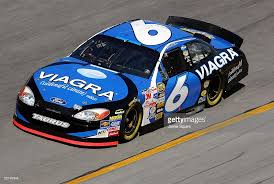
In 2000 Pfizer's Viagra sponsors NASCAR driver Mike Bliss (#27) for Eel River Racing, switching next year to Mark Martin (#6) of Roush Racing, who finishes 2nd in points in 2002 and 4th in 2004 and 2005.


On Feb. 18, 2001 the 2001 (43rd) Daytona 500 is won by Michael Curtis Waltrip (1963-), brother of Darrell Waltrip; Dale Earnhardt Jr. comes in 2nd, and Rusty Wallace comes in 3rd; on lap 173 Robby Gordon hits Ward Burton, causing an 18-car wreck that flips Tony Stewart's car down the backstretch; on lap 200 1998 winner Dale Earnhardt Sr. loses control of his car and collides head-on with the wall, killing him, becoming the 4th NASCAR driver to be killed in 9 mo. since Adam Petty in May 2000, causing a fan outcry resulting in safety improvements.

On May 27, 2001 the 2001 (85th) Indianapolis 500 is won by rookie Helio Castroneves (1975-) of Brazil.

On Feb. 17, 2002 the 2002 (44th) Daytona 500 is won by John Edward "Ward" Burton III (1961-), brother of Jeff Burton; rookie Jimmie Johnson wins the pole, and fellow rookie Kevin Harvick qualifies 2nd, becoming the first time the field is led by two rookies; the last race for Dave Marcis. On May 26 Helio Castroneves of Brazil wins the 2002 (86th) Indianapolis 500, his 2nd straight win, first time since Al Unser in 1971.

On Feb. 16, 2003 the 2003 (45th) Daytona 500 is won by Michael Waltrip (2nd win in 3 years) in 109 laps after rain shuts it down; cars carry decals honoring the Space Shuttle Columbia astronauts; Ryan Newman's Dodge tumbles end-over-end in the tri-oval, causing an investigation. On May 25 the 2003 (87th) Indianapolis 500 is won by Gil de Ferran (1967-) of France after passing his Penske teammate Helo Castroneves with 31 laps to go.

In 2003 6'4" "Sheffield, South Yorkshire, England-born Justin Boyd Wilson (1978-2015) becomes the tallest Formula One racer to date (until ?); too bad, he suffers a traumatic brain injury on Aug. 23, 2015 at the Pocono Raceway in Penn., and dies on Aug. 24.


On Feb. 15, 2004 the 2004 (46th) Daytona 500, the first to air in high-definition is won by Ralph Dale Earnhardt Jr. (1974-), becoming his first win six years to the day after his father's first and only win; Tony Stewart comes in 2nd, and rookie Scott Wimmer comes in 3rd. On May 30 the 2004 (88th) Indianapolis 500 is won by Buddy Rice (1976-) after the race is ended by rain at 180 laps (450 mi.); team owners are Bobby Rahal and David Letterman. On June 9 Rusty Wallace sets a NASCAR speed record of 216.309 mph at Talladega Superspeedway, beating Bill Elliott's 1987 record of 212.809 mph.



On Feb. 20, 2005 the 2005 (47th) Daytona 500 is won by Jeff Gordon (3rd win); Kurt Busch comes in 2nd, and Dale Earnhardt Jr. comes in 3rd; due to the green-white-checker finish rule of 2004, it becomes the first Daytona 500 to go longer than 500 mi. (507. mi.); the first to end at sunset. Lady and gentlemen, start your engines? On May 29 the 2005 (89th) Indianapolis 500 is upstaged by 5'2" 100 lb. bikini-loving Danica Sue Patrick (1982-), the 4th woman ever in the race, who achieves the highest starting position for a woman as well as the highest finish, and becomes the first woman to lead a lap (#56); she regains the lead near the end, but is low on fuel and finishes 4th in her Honda, which is put in the Honda Museum; the winner is English driver Daniel Clive "Dan" Wheldon (1978-2011), sponsored by Michael Andretti, ending a 35-year Andretti drought; Patrick becomes the first female Indy Racing League Rookie of the Year; Wheldon is killed on Oct. 16, 2011 at Las Vegas Motor Speedway. On June 19 14 Formula One drivers refuse to participate in the 2005 U.S. Grand Prix because of fears of the safety of their Michelin tires; the race is won by Michael Schumacher (1969-), one of six who race on Bridgestones.
 <
<
On Feb. 19, 2006 the 2006 (48th) Daytona 500 is won by Jimmie Kenneth Johnson (1975-) in 203 laps (507.5 mi.) (2nd in a row to go longer than 500 mi.), becoming the first to end after sunset. On May 28 Samuel Jon "Sam" Hornish Jr. (1979-) whips by father-son team of Michael (43) and Marco (19) Andretti to win the 2006 (90th) Indianapolis 500 by .0635 sec., the 2nd closest finish ever; although Mario Andretti won in 1969, neither of his sons has; Hornish wins in his 7th try after leaving the pit late in the race with his fuel hose connected, losing a lap; much-touted Danica Patrick finishes 8th - did she panica?


On Feb. 18, 2007 the 2007 (49th) Daytona 500 is won by Kevin Michael Harvick (1975-) by 0.02 sec. over Mark Martin in the closest finish since 1959. On May 27 George Dario Marino Franchitti (1973-) of Scotland wins the 2007 (91st) Indianapolis 500 after rain forces it to end after 166 laps, 415 into the scheduled 500 mi., and he outsmarts the other leaders by not pitting right before the downpour begins; Miss Sugar Britches Danica Patrick comes in #8.


On Feb. 17, 2008 the 2008 (50th) Daytona 500 is won by Ryan Joseph "Rocket Man" Newman (1977-), who receives a special gold-plated Harley J. Earl Trophy. On Apr. 20 Danica Patrick (1982-) finally breaks the "gas ceiling" and wins the Indy Japan 300, becoming the first female winner in IndyCar history - and how many women were looking for shells today? On May 25 (Sun.) the 2008 (92nd) Indianapolis 500 is won by fastest qualifier Scott Ronald Dixon (1980-) of New Zealand.


On Feb. 15, 2009 the 2009 (51st) Daytona 500 is won by Matthew Roy "Matt" Kenseth (1972-), becoming the first #17 car since Darrell Waltrip in 1989 to win. On May 24 (Sun.) the 2009 (93rd) Indianapolis 500 is won by Helio Castroneves (1975-) of Brazil (3rd win).



On Feb. 14, 2010 the 2010 (52nd) Daytona 500 is won by James Christopher "Jamie" McMurray (1976-), who goes on to win the 2014 Brickyard 400. On May 30 (Sun.) the 2010 (94th) Indianapolis 500 is won by George Dario Marino Franchitti (1973-) (2nd win), with Dan Wheldon coming in 2nd, and Marco Andretti coming in 3rd; Tony Kanaan starts in the final position but runs as high as 2nd before finishing 11th; the first Indy 500 with four female drivers. In 2010 after becoming the youngest-ever runner-up in 2009, Sebastian Vettel (1987-) of Germany wins the Formula One World Title, becoming the youngest (until ?); he repeats in 2011, 2012, and 2013, becoming the youngest double, triple, and quadruple winner (until ?).

On May 11, 2010 the $160M NASCAR Hall of Fame in Charlotte, N.C. opens.
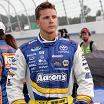


On Feb. 20, 2011 the 2011 (53rd) Daytona 500 is won by 20-y.-o. Trevor Bayne (1991-), becoming the youngest driver to win the race, and only to win on the first attempt. On May 29 the 2011 (95th) Indianapolis 500 is won by Daniel Clive "Dan" Wheldon (1978-2011) of England (2nd win) after leader John R. "Captain America" Hildebrand (1988-) (rookie) hits the wall on the final turn of the final lap; too bad, on Oct. 16 Wheldon is killed in a collision at the 2011 IZOD IndyCar World Championship at Las Vegas Motor Speedway; Hildebrand is injured in the same crash.


On Feb. 27, 2012 after being delayed one day because of rain, the 2012 (54th) Daytona 500 becomes the first aired during prime time; the winner is Matthew Roy "Matt" Kenseth (1972-), with Dale Earnhardt Jr. coming in 2nd. On May 27 the 2012 (96th) Indianapolis 500 becomes the first with all entries having new model-year chassis and turbocharged engines, and is won by George Dario Marino Franchitti (1973-) (3rd win) after Takuma Sato challenges him for the lead in turn one, loses control, and crashes into the outside wall.


On Feb. 17, 2013 Danica Patrack becomes the first woman to win the pole position at the Daytona 500, first for any NASCAR pole position. On Feb. 24 the 2013 (55th) Daytona 500 is won by Jimmie Kenneth Johnson (1975-) (2nd win); Danica Patrick becomes the first woman to achieve the pole position at the start, and to lead the race (5 laps), but comes in #8. On May 26 (Sun.) the 2013 (97th) Indianapolis 500 is won by Tony Kanaan (Antoine Rizkallah Kanaan Filho) (1974-) of Brazil, who beats Carlos Munoz by 0.12 sec.


On Feb. 23, 2014 the 2014 (56th) Daytona 500 is won by "Pied Piper of Daytona" Ralph Dale Earnhardt Jr. (1974-), who breaks a 55-race winless streak, becoming his 2nd win (2004). On May 25 Dallas, Tex.-born Ryan Hunter-Reay (1980-) (who drives IndyCar No. 28 to show support for the 28M living with cancer worldwide) of Andretti Autosport wins the 2014 (98th) Indianapolis 500 by .06 sec. over Helio Castroneves, the 2nd closest finish since 1992 and first Am. winner since 2006.

On Feb. 22, 2015 the 2015 (57th) Daytona 500 is won by Joseph Thomas "Joey" Logano (1990-) (#22) of Team Penske.
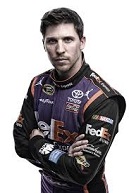
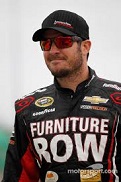
On Feb. 21, 2016 the 2016 (58th) Daytona 500 is won by Joe Gibbs Racing driver (#11) James Dennis Alan "Denny" Hamlin (1980-), who beats Denver Furniture Row driver (#78) Martin Lee Truex Jr. (1980-) by 0.011 sec, closest in Daytona 500 history (until ?).
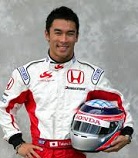
On May 28, 2017 (Sun.) the 2017 Indianapolis 500 features the first active world champion Fernando Alonso, whose engine fails on lap 179; the winner is Takuma Sato (1977-) of Japan, who becomes the first Asian winner.
On Nov. 19, 2017 Denver Furniture Row driver (#78) Martin Lee Truex Jr. (1980-) wins the Ford EcoBoost 400 at Homestead-Miami Speedway to win his 8th race of the year, and his first 2017 NASCAR championship.
In June 2020 NASCAR bans Confed. flags, pissing-off the Southern redneck fans, and causing driver Ray Ciccarelli to announce that he's leaving at the end of the season.